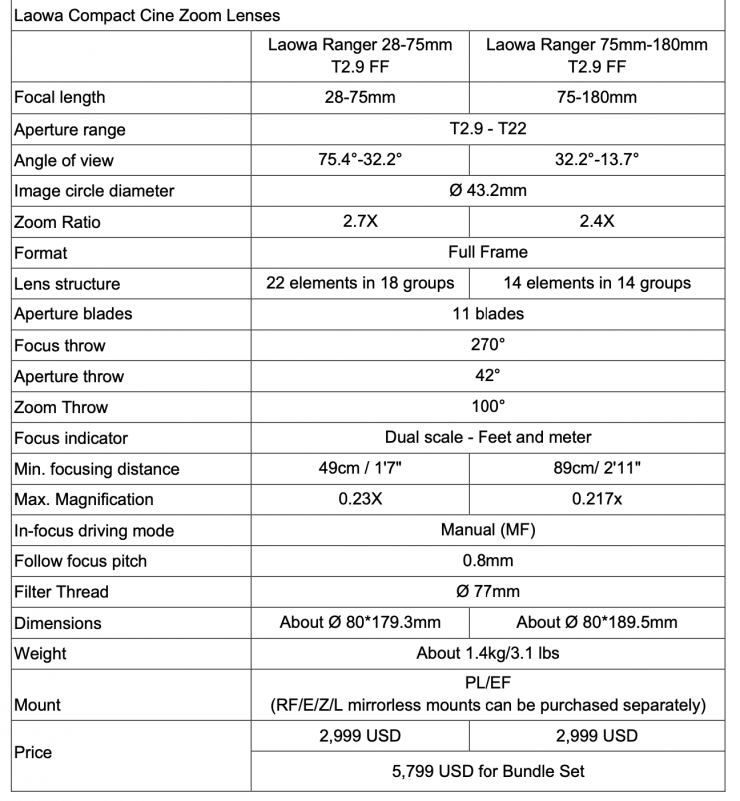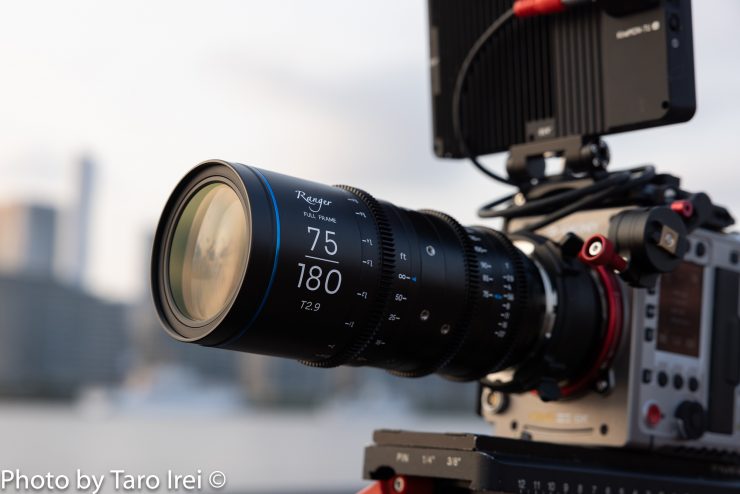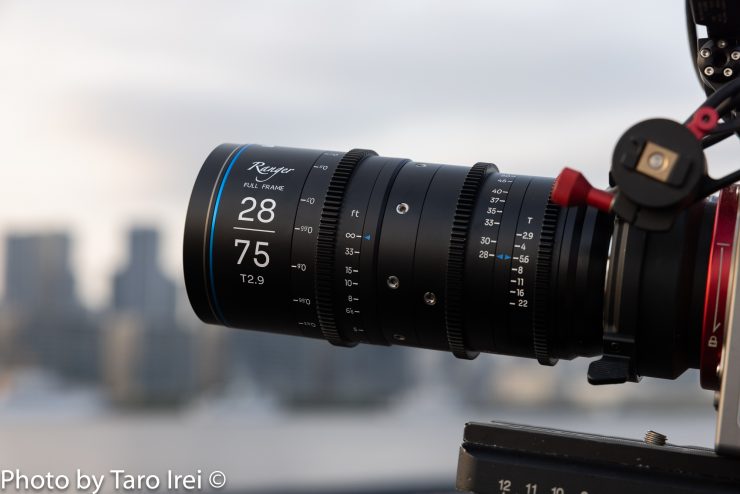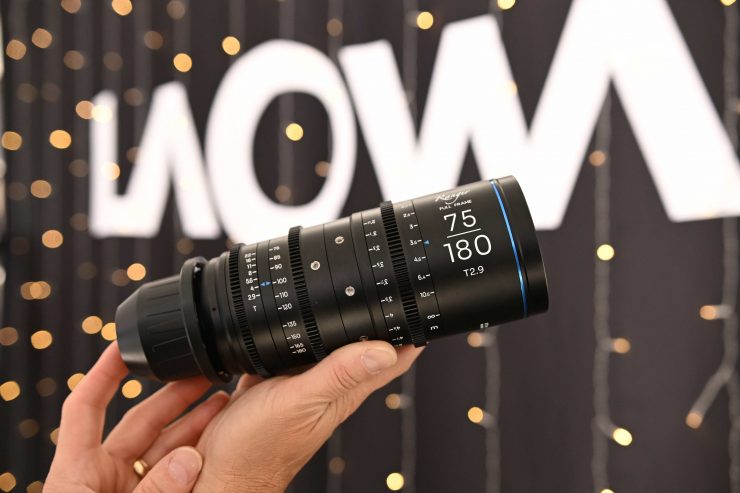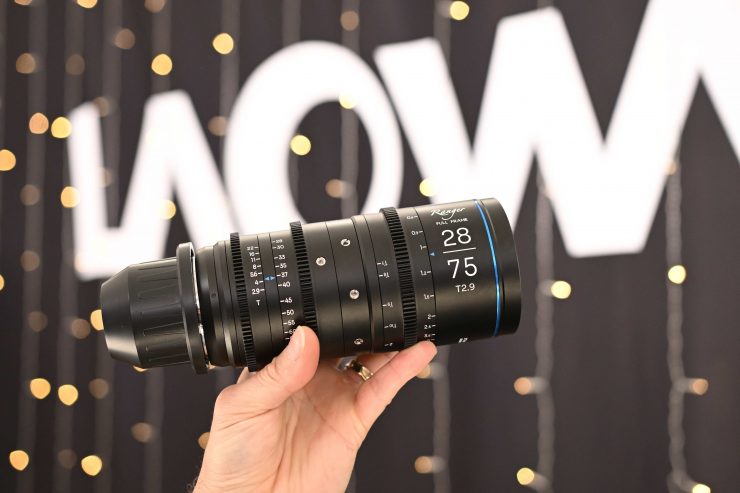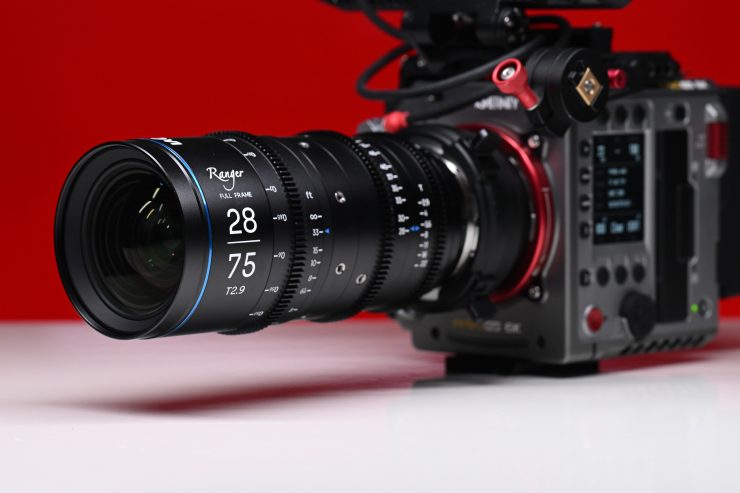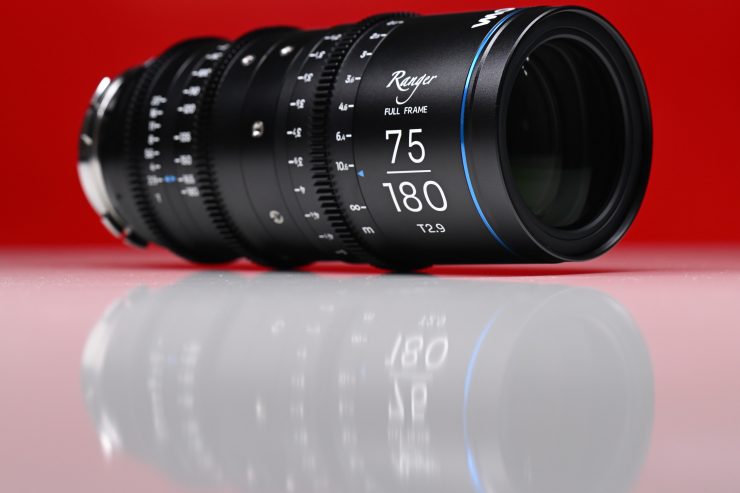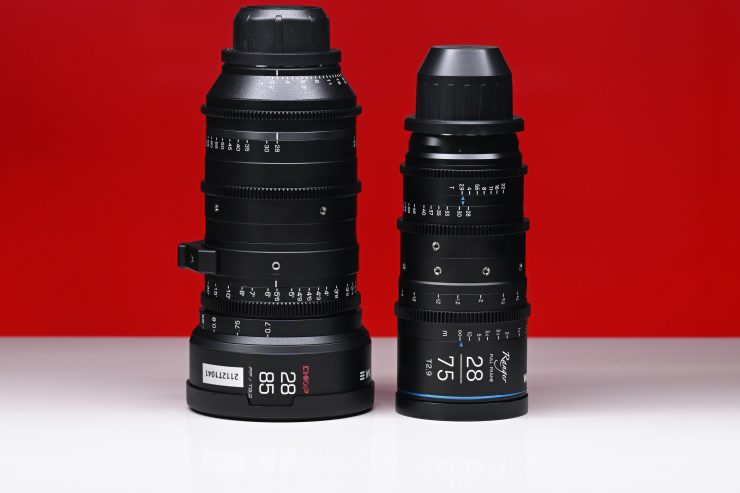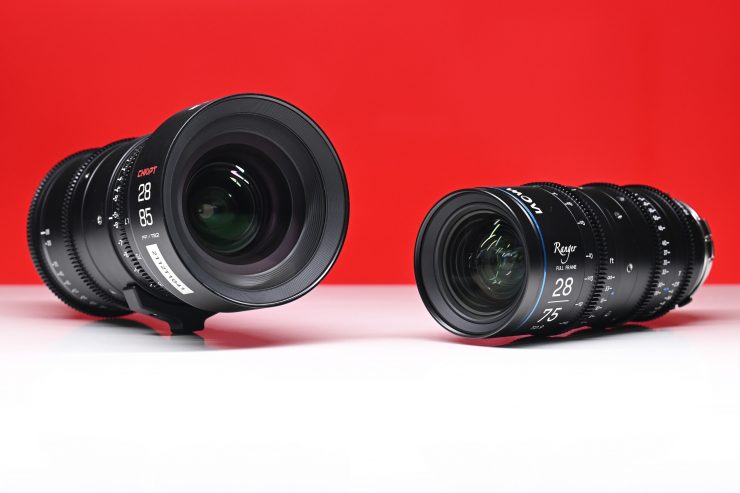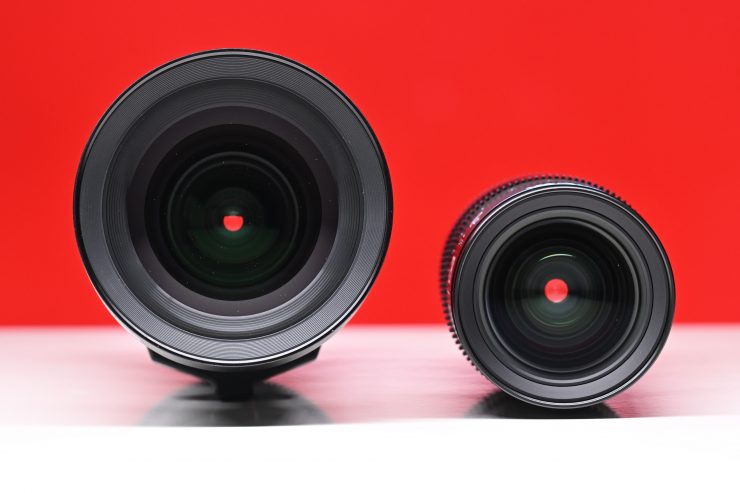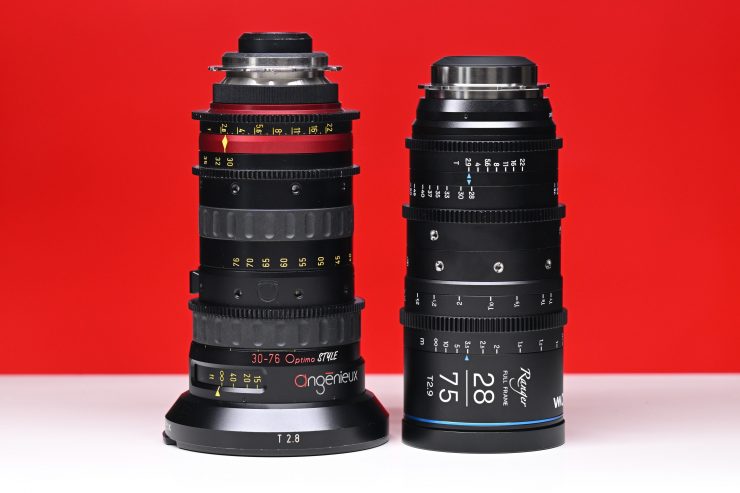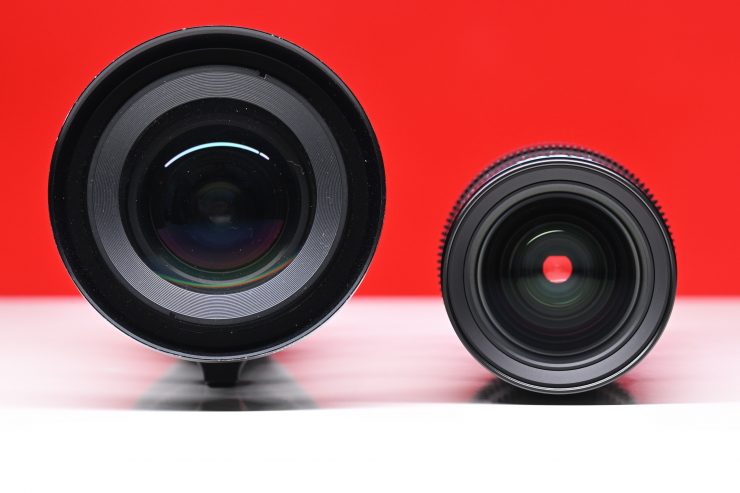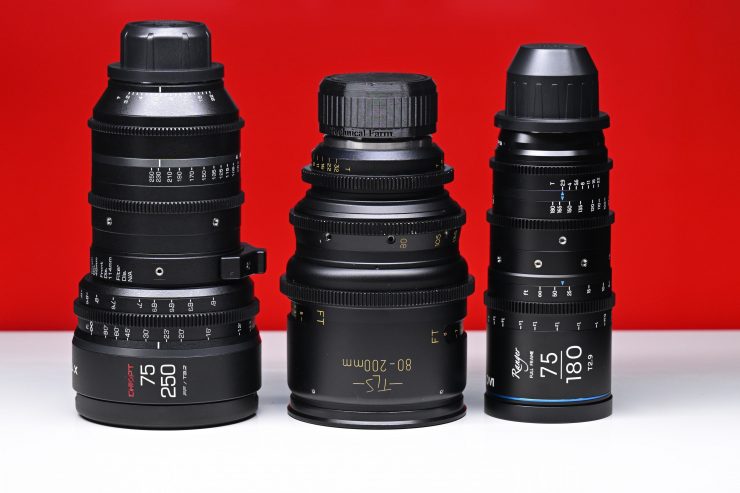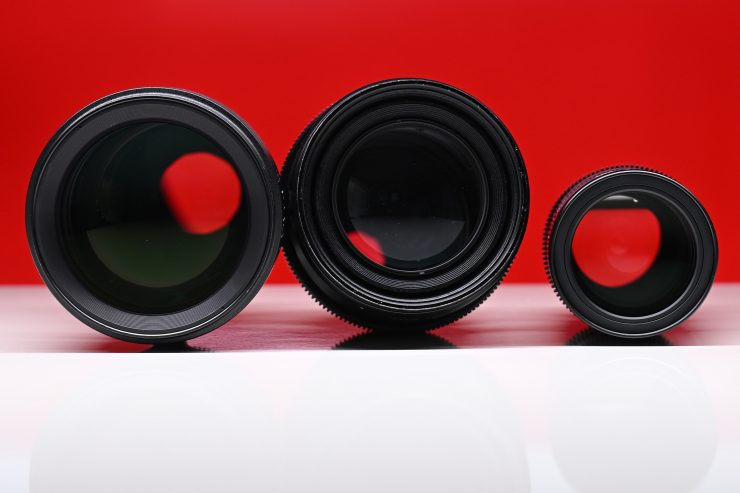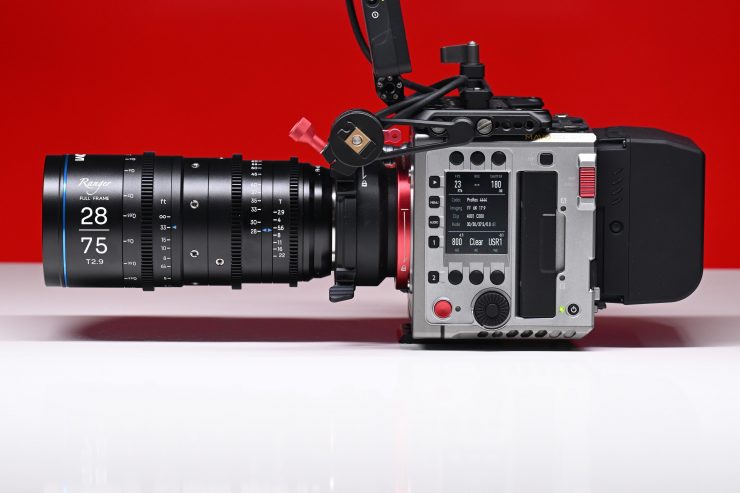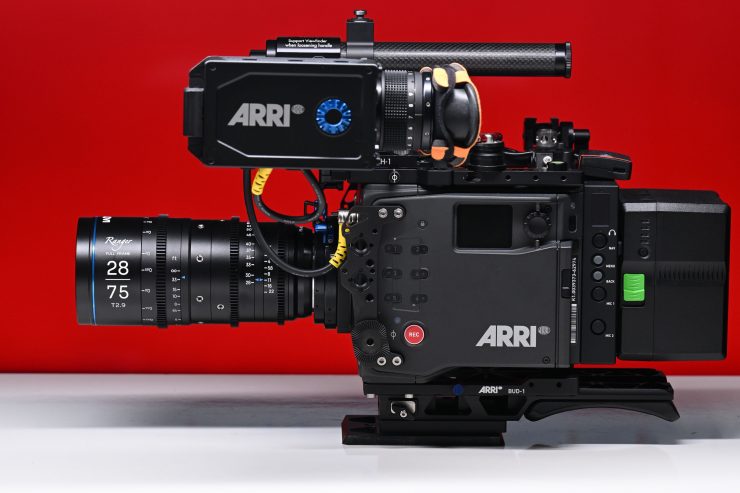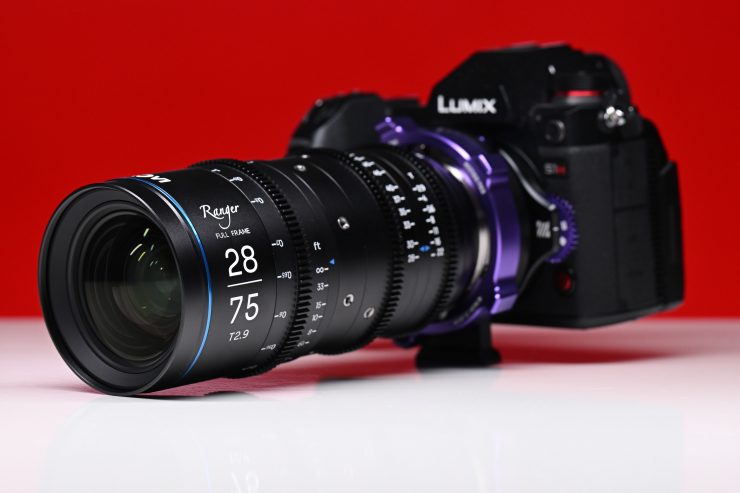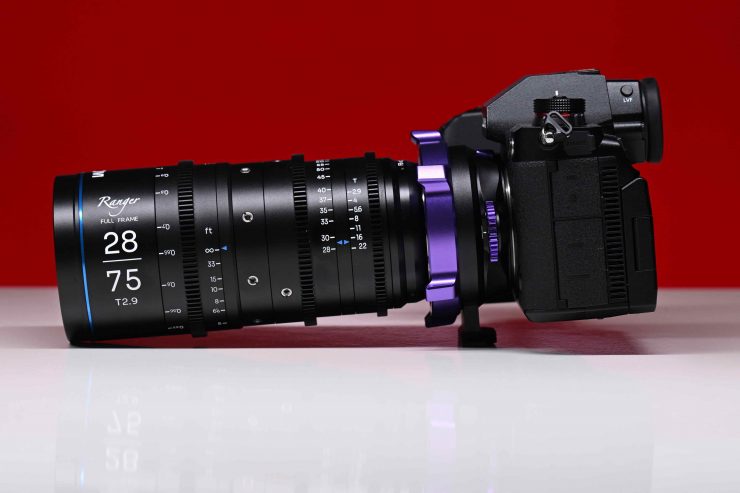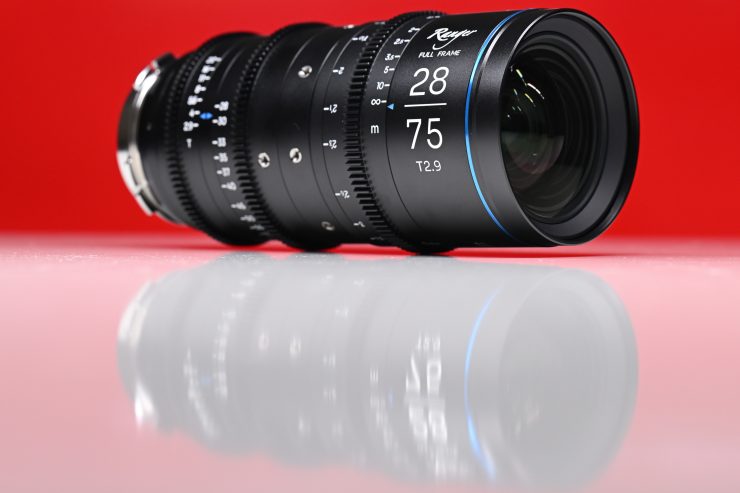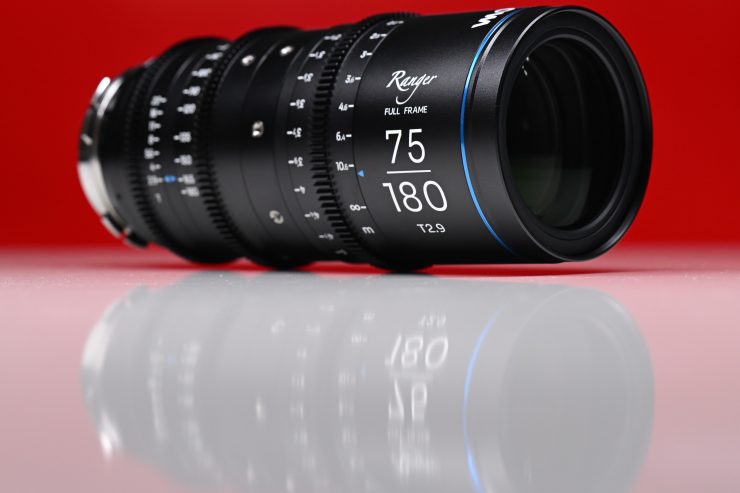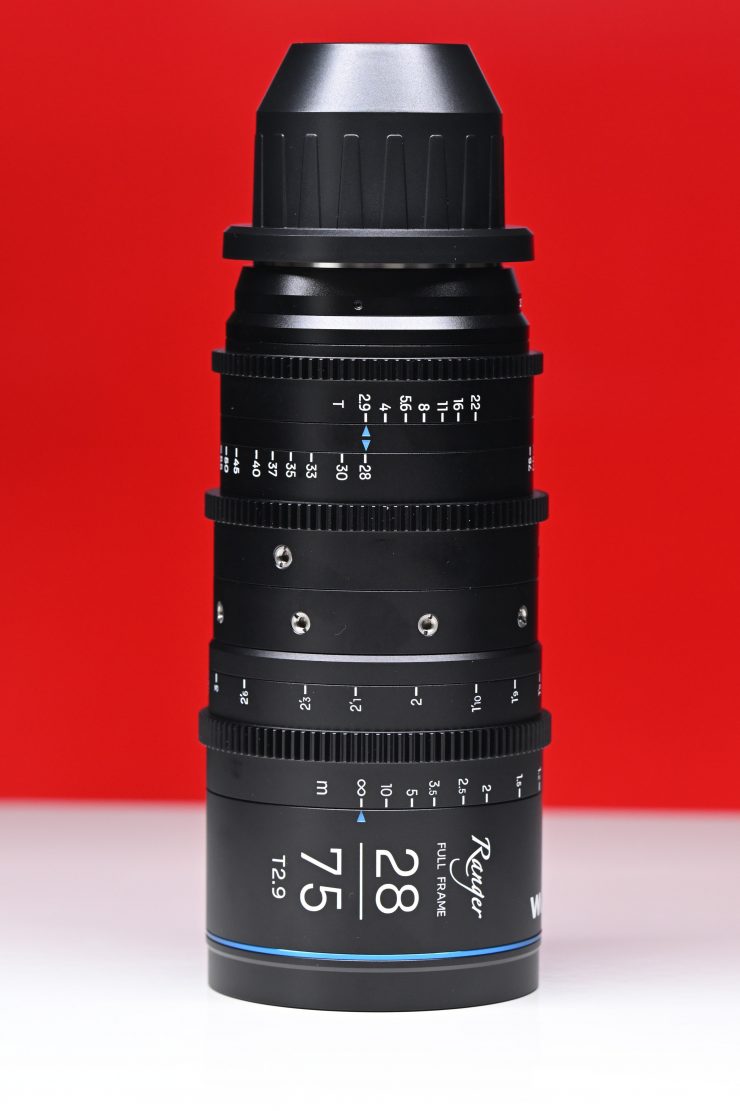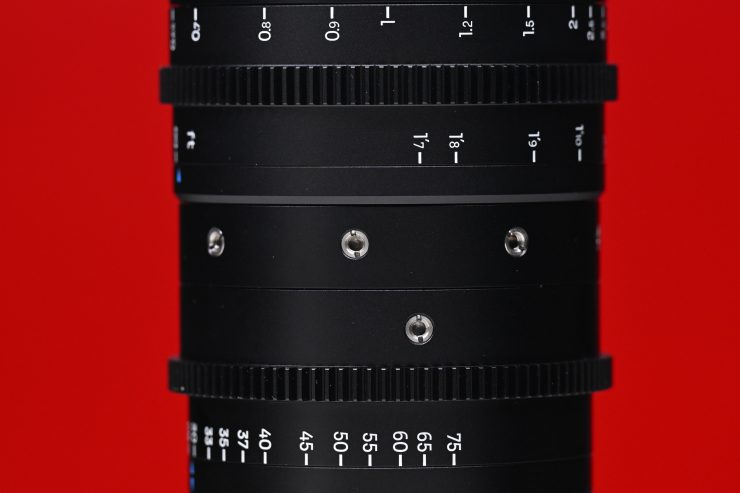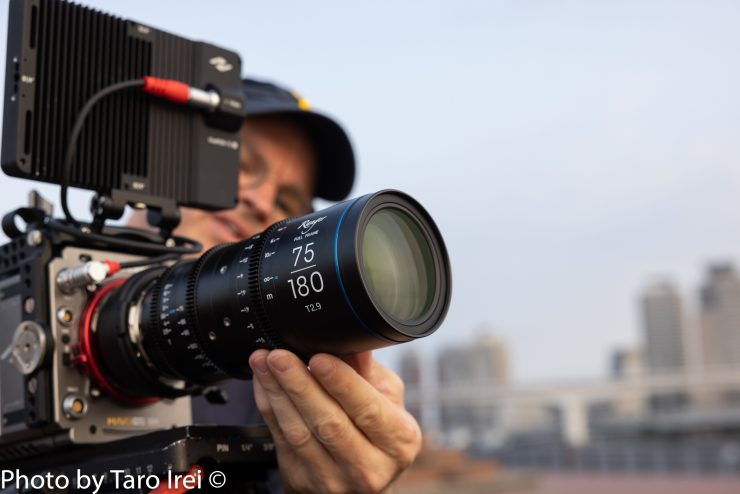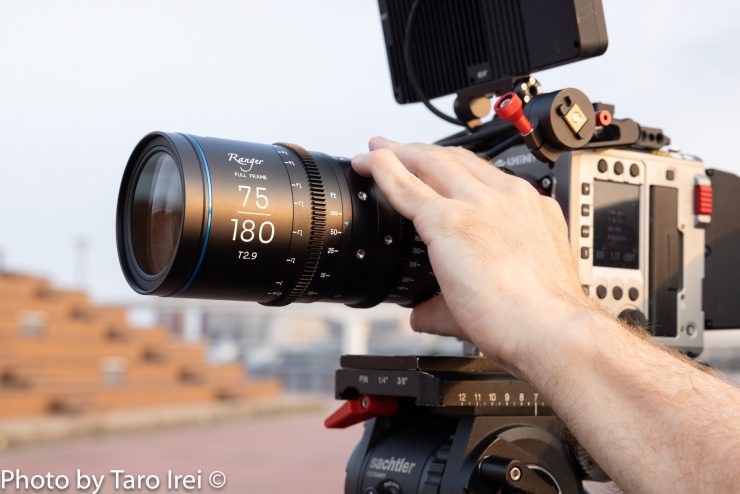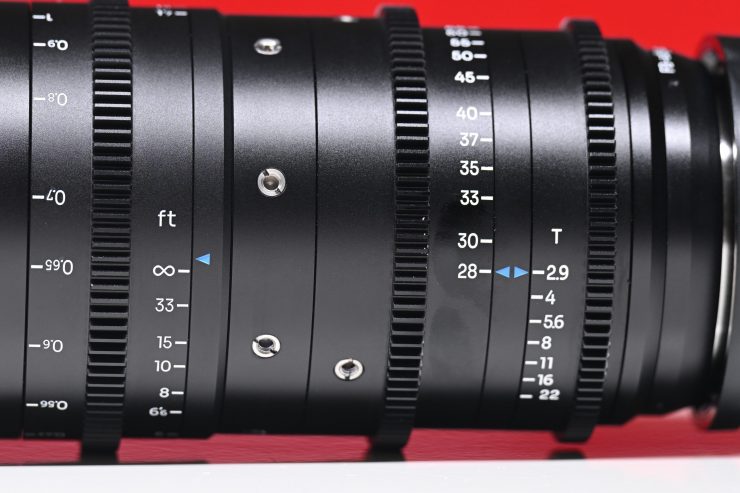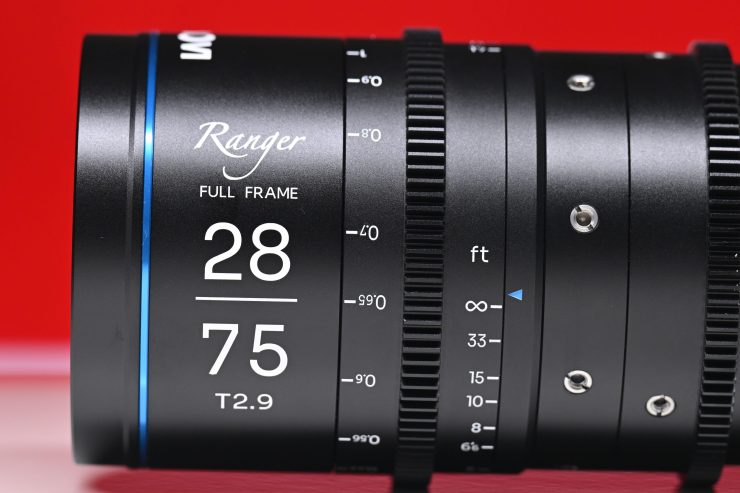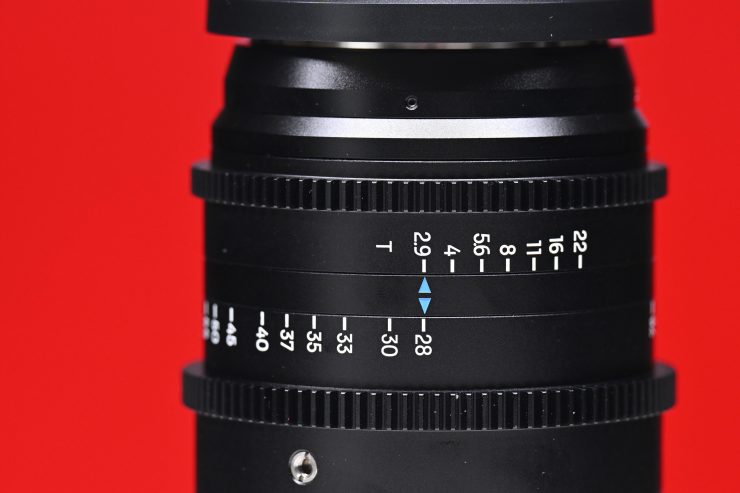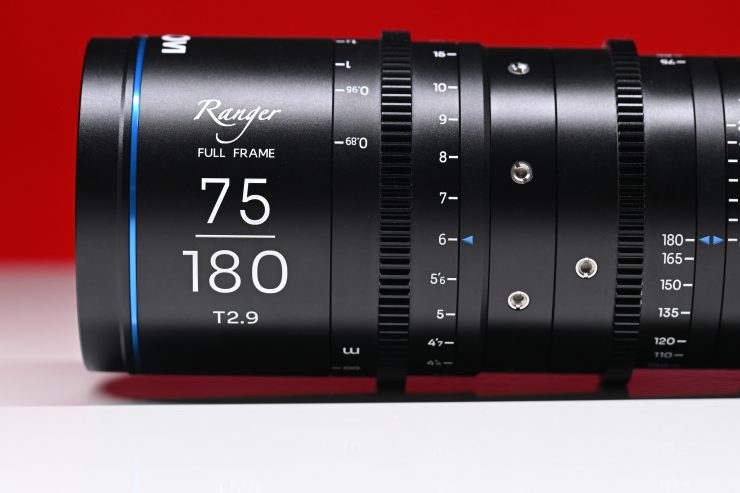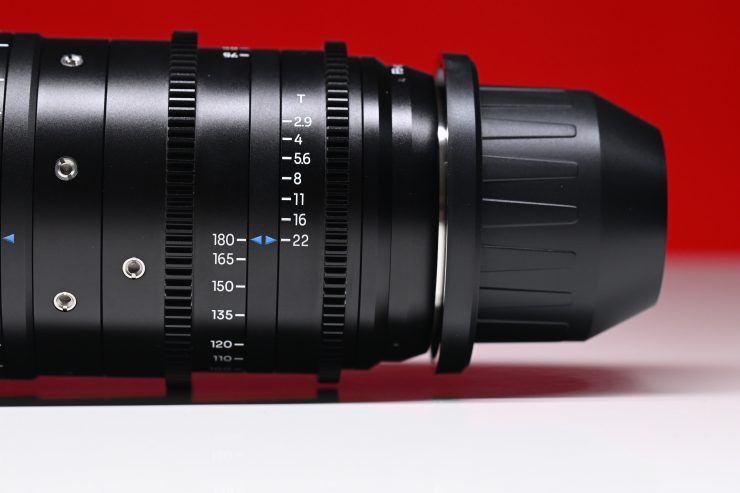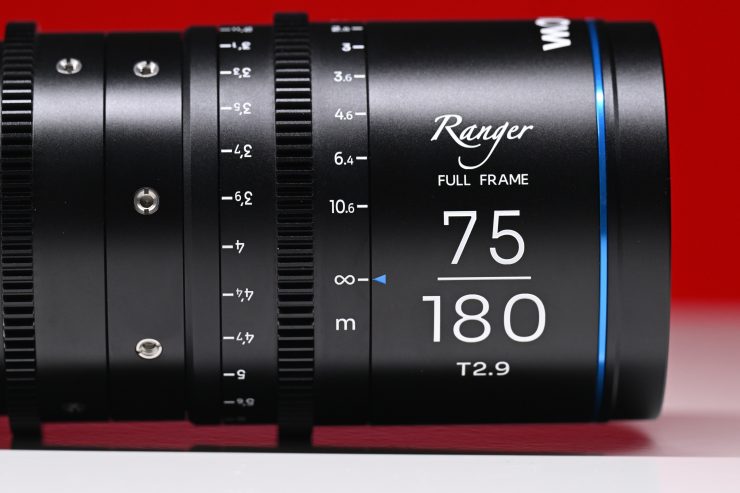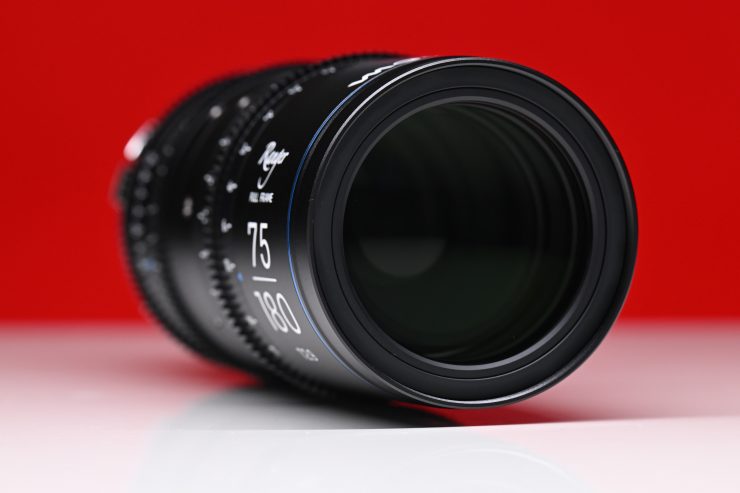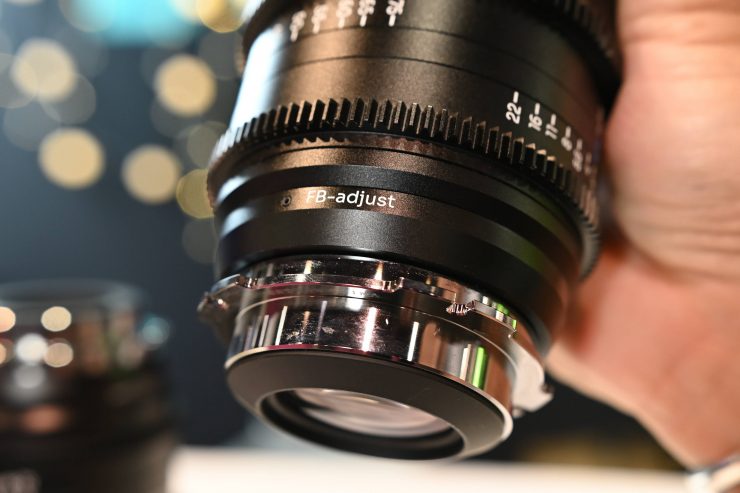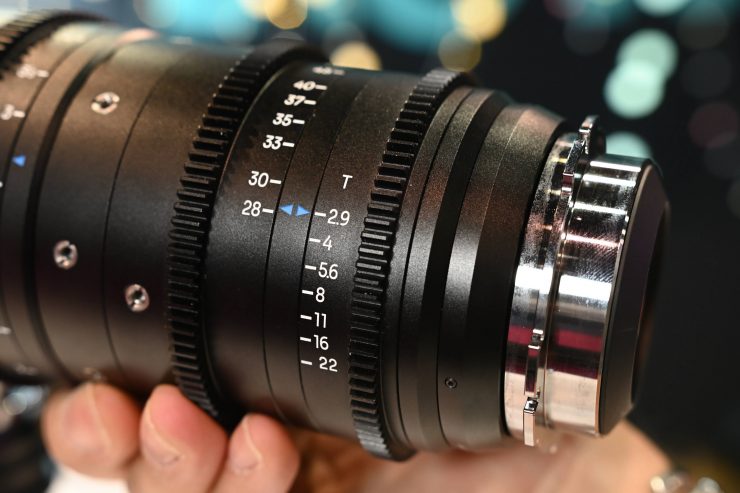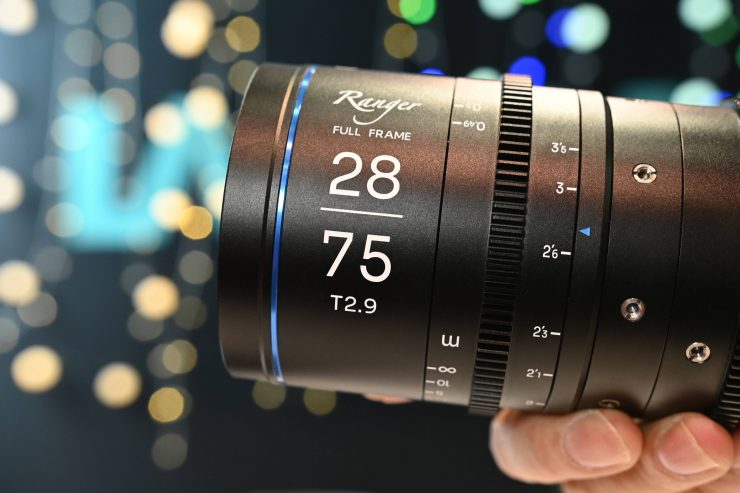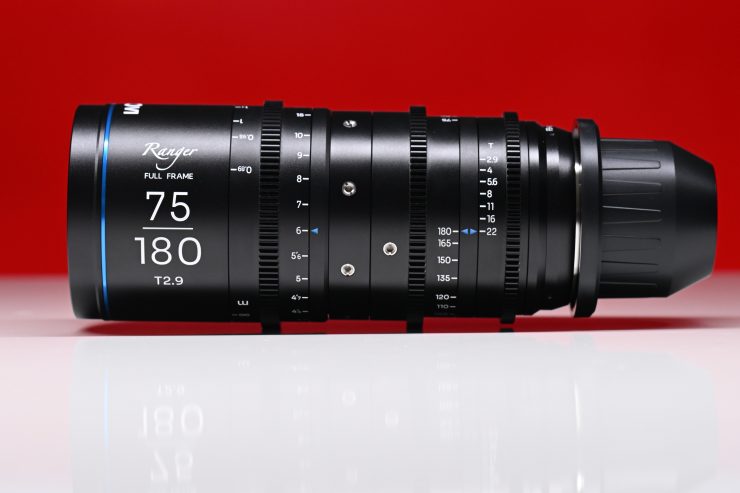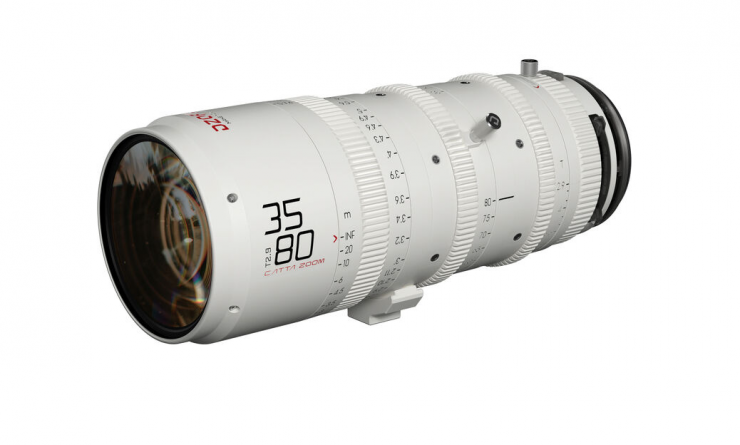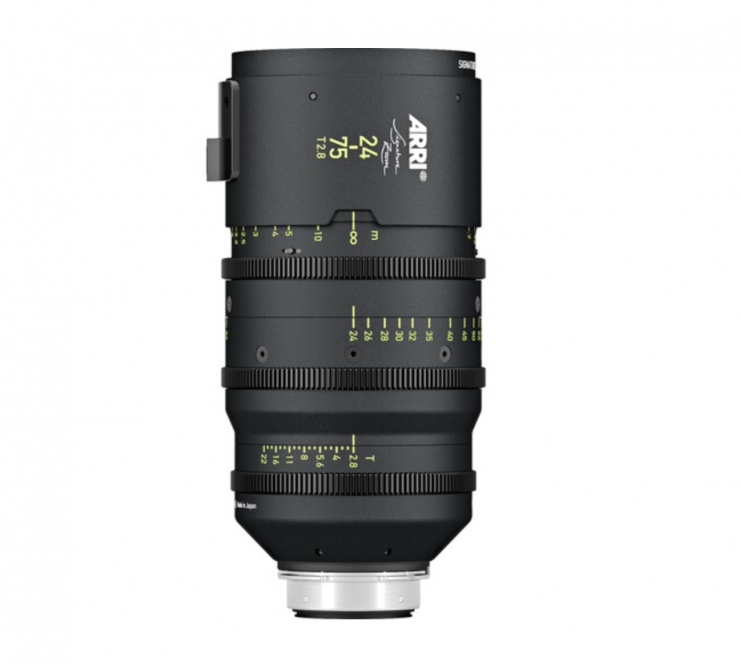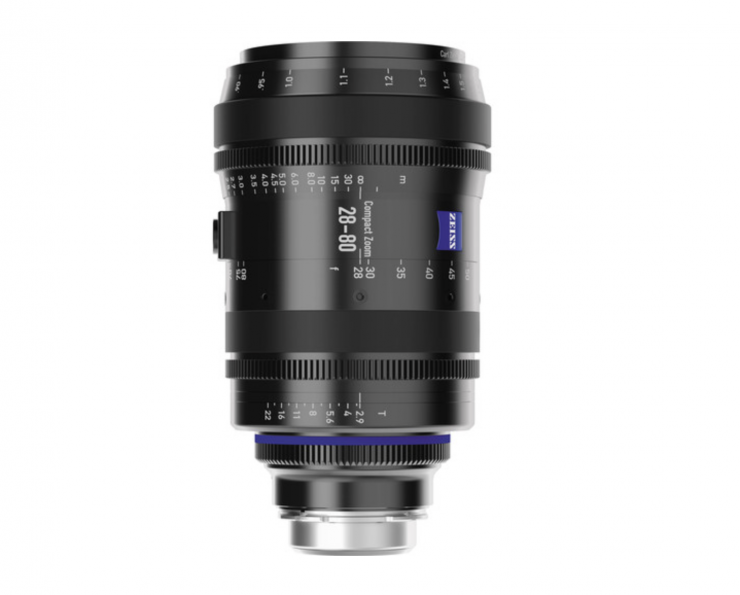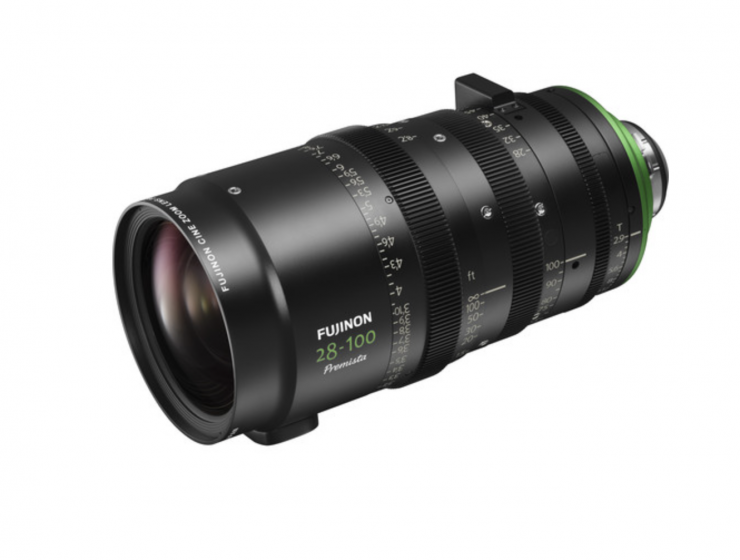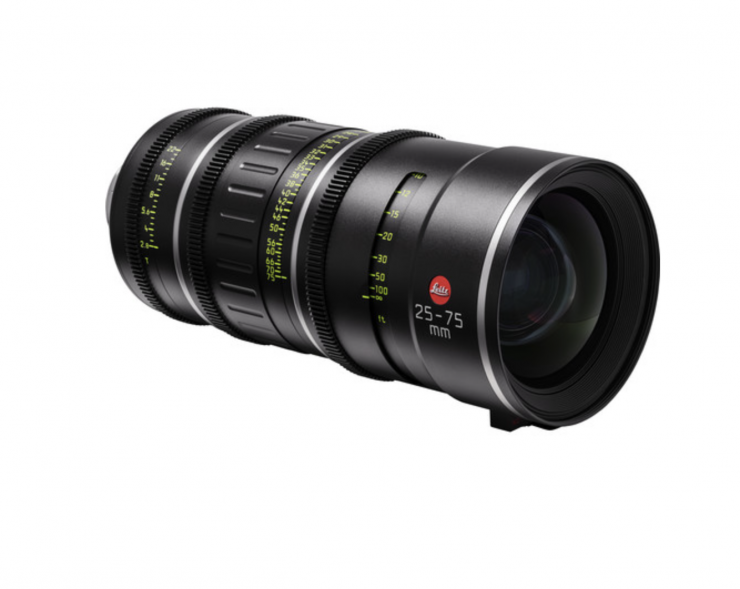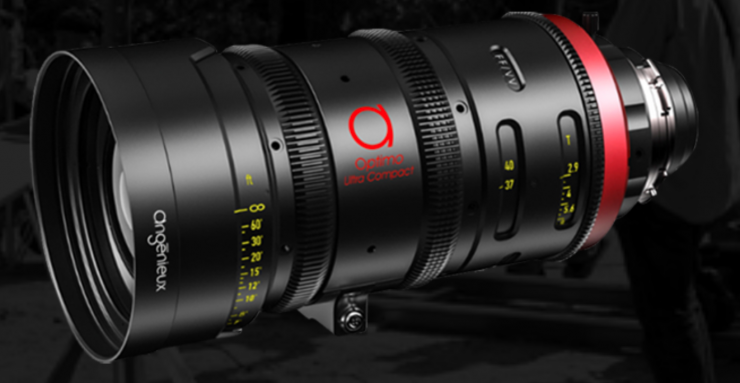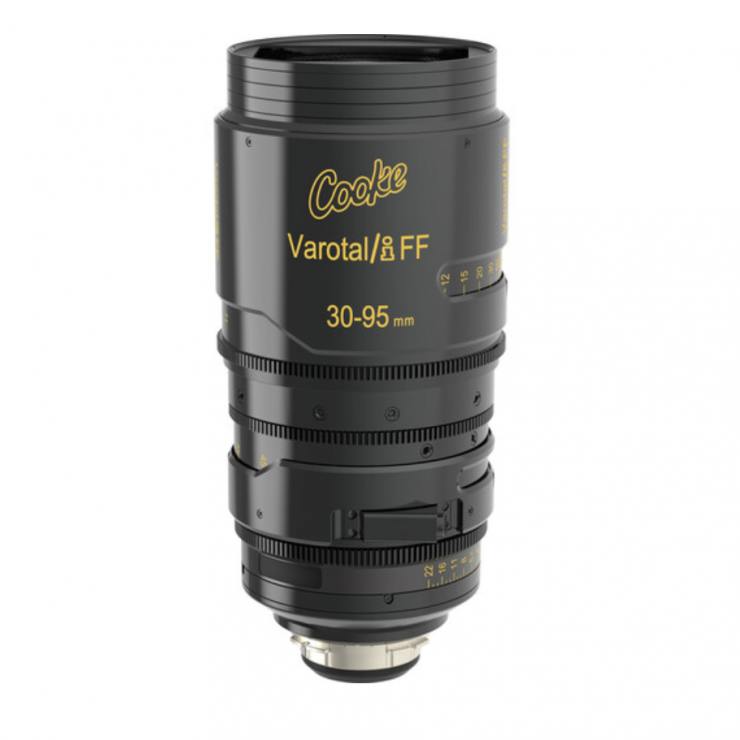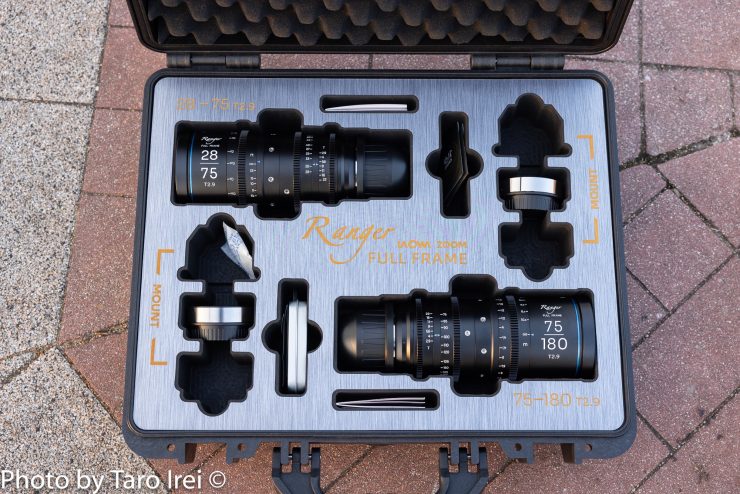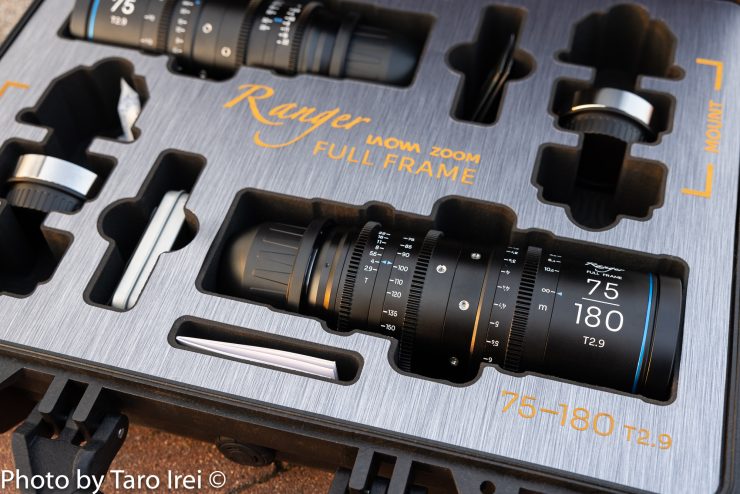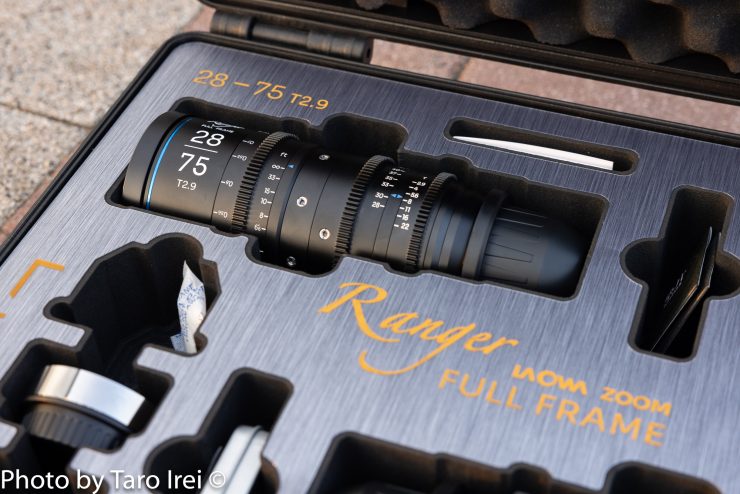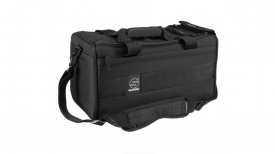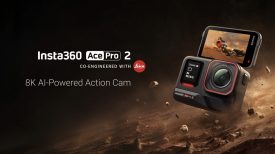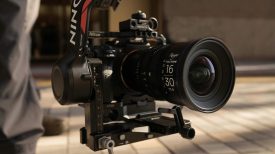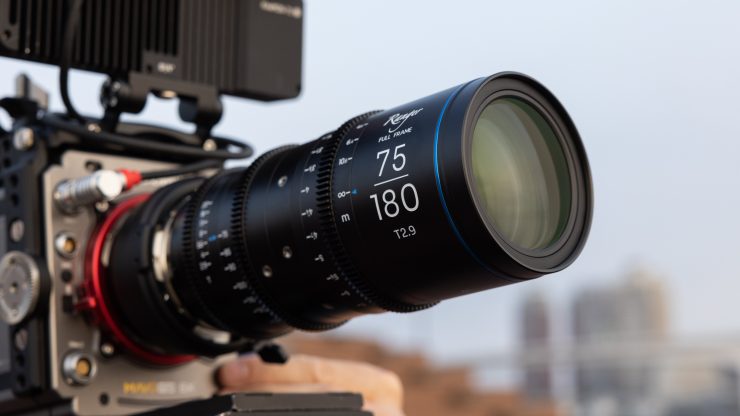
Laowa recently announced its new Ranger Compact Cine Zoom Lenses. The new series consists of a 28-75mm T2.9 and a 75-180mm T2.9. There will also be a 16-30mm T2.9 joining the series soon. The lenses were designed to meet the demands of different production sizes from solo to small crew run-and-gun filmmakers up to larger productions.
I know a lot of our readers were very curious about these lenses, so I got hold of a set to put them through their paces.
Key features
- Light and compact
- Long and versatile zoom range
- Constant T2.9 aperture
- Extremely close focus distance
- Parfocal design
- Well-controlled with almost no focus breathing –
- Exceptional image quality
- Quick back focus adjustment mechanism
- Interchangeable PL/ EF mount
- Additional mirrorless mounts are available (E/ RF/ Z/ L)
At Cine Gear 2023, we caught up with Laowa where they announced the new 16-30mm T2.9 Ranger Full Frame Cine Zoom that will join the 28-75mm T2.9 & 75-180mm T2.9.
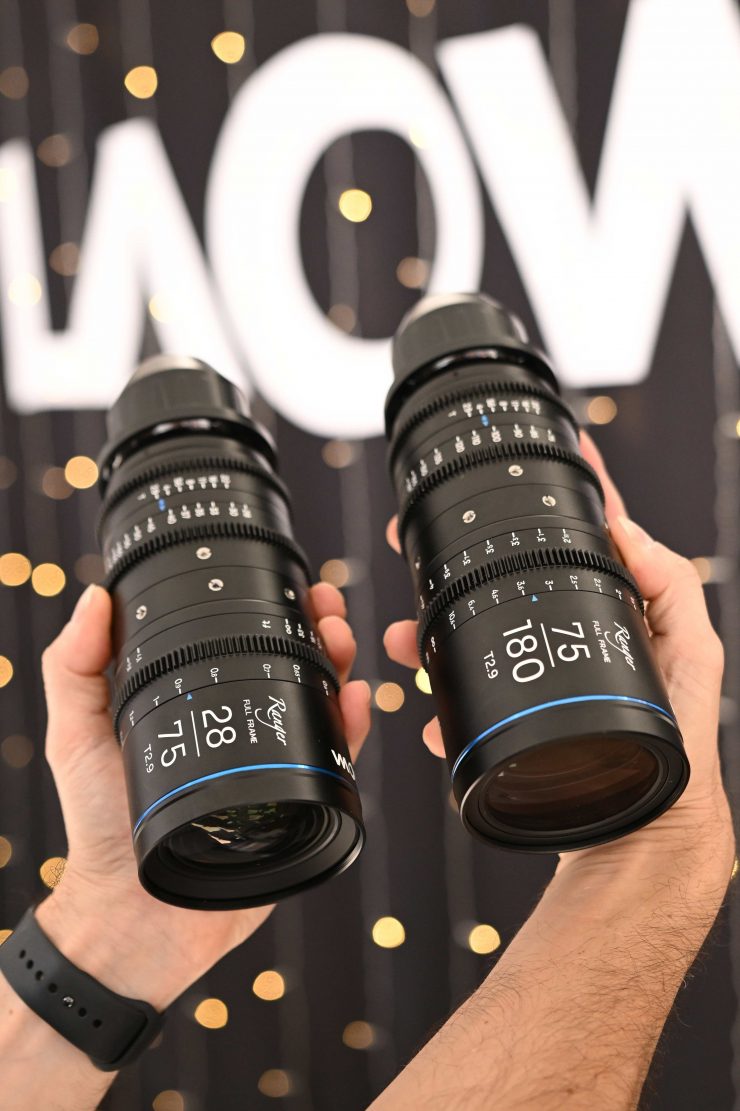
Laowa also exclusively gave us the pricing on the Ranger Full Frame Cine Zooms ahead of their official launch date which was the 13th of June. They retail for $2,999 USD each.
The two lens set that features the 28-75mm T2.9 & 75-180mm T2.9 retails for $5,799 USD.
Concept
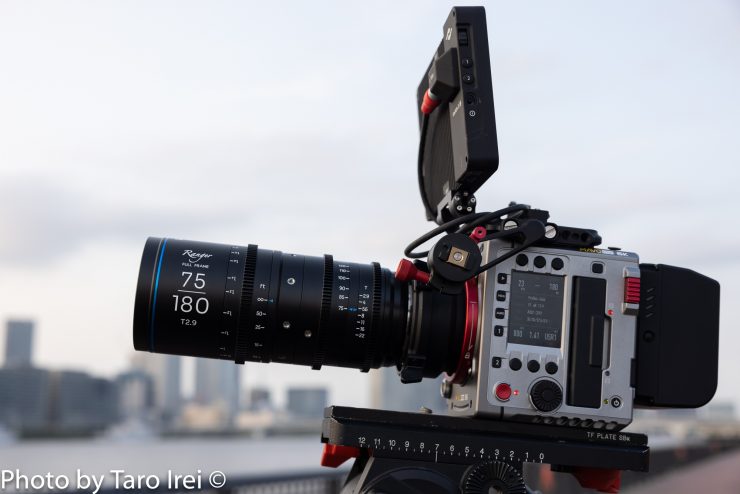
Laowa set out to do something a little different from what everyone else is doing. That has pretty much been its mantra since day 1 and they have a good track record of making interesting and unique lenses. Laowa doesn’t just try and copy what everyone else is doing, they always put their own spin on their lenses.
Focal Range
One of the biggest caveats of using a full-frame or larger sensor digital cinema camera is that the lenses become larger, heavier, and have reduced focal ranges. This is especially true when it comes to cine zooms that cover large image circles.
The focal ranges of 28-75mm and 75-180mm that the Ranger series offers are reasonably decent given their size and weight. Being able to build a full rame zoom set with a constant T2.9 aperture and a focal range from 16-180mm (with the addition of the upcoming 16-30mm T2.9) for less than $9K USD is impressive, especially given their compact size. The lenses are claimed to be parfocal and from my testing, I found that to be true.
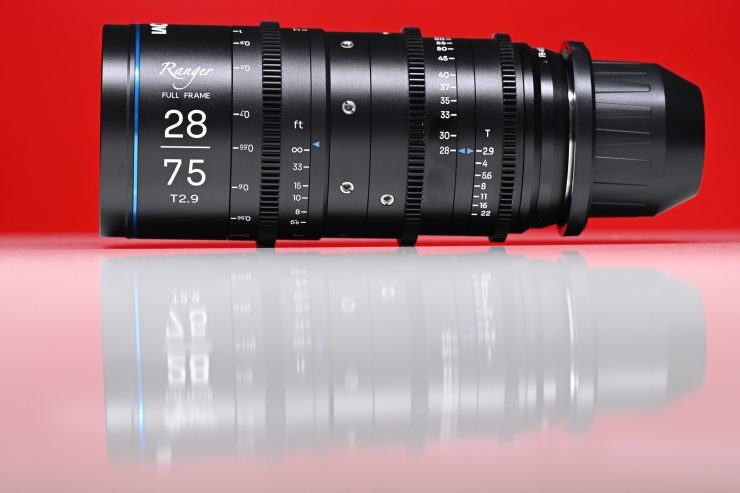
Laowa has gone in a fairly similar direction as DZOFilm and chosen to make lighter full-frame cine zooms at the expense of increased focal range. Conversely, CHIOPT (another competitor in this space) decided to make lenses with greater focal ranges, but they are heavier and larger.
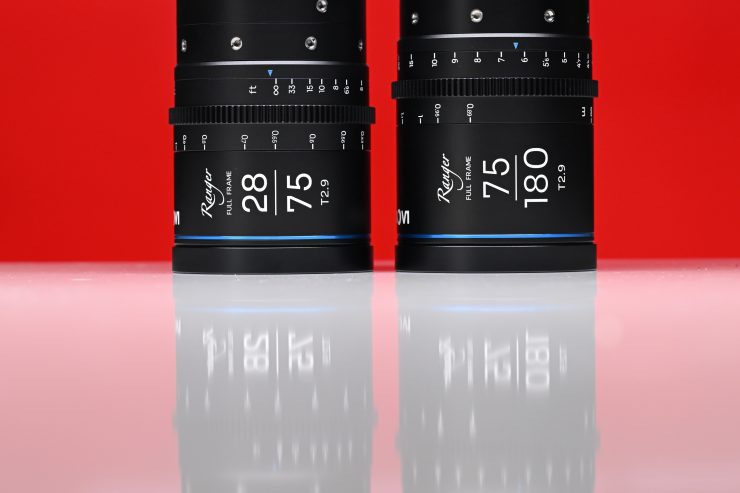
Unfortunately, when it comes to optics you can’t have your cake and eat it too. You simply can’t have a lightweight cine zoom with a decent constant T- stop and a big focal range. Yes, you can make your lens housing out of more exotic and expensive materials, but that is going to increase the price while only saving you a handful of weight. In saying that, it is pretty impressive what Laowa has managed to do in keeping the size and weight of the Ranger Zooms to a minimum.
Everyone wants an 18-250mm T2.9 cine zoom that weighs 2.5kg and costs $3,000 USD, well guess what, that is never going to happen. It is always going to be a compromise for lens manufacturers when it comes to weight, size, focal length, and T-stop.
Image Coverage
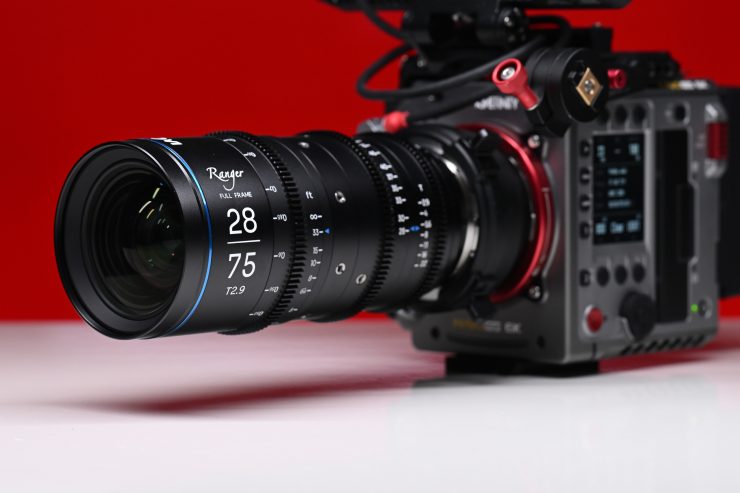
The lenses cover image circles of up to 43.2mm, so they can be used on almost all of today’s modern digital cinema cameras.
| IMAGE CIRCLE | |
| Laowa 28-75 T2.9 Ranger Full Frame Cine Zoom | 43.2mm |
| Laowa 75-180 T2.9 Ranger Full Frame Cine Zoom | 43.2mm |
| CHIOPT COMPACT ZOOM 28-85mm T3.2 | 46mm |
| CHIOPT COMPACT ZOOM 75-250mm T3.2 | 46mm |
| DZOFilm Catta 35-80mm T2.9 | 43.5 mm |
| DZOFilm Catta Ace 70-135mm T2.9 | 43.5 mm |
| ARRI 24-75mm T2.8 Signature Zoom | 46mm |
| ARRI 45-135mm T2.8 Signature Zoom | 46mm |
| Angenieux Optimo Ultra Compact 21-56mm T2.9 FF | 46.3mm |
| Angenieux Optimo Ultra Compact 37-102mm T2.9 FF | 46.3mm |
| Leitz Cine Zoom 25-75mm T2.8 | 46.5mm |
| Leitz Cine Zoom 55-125mm T2.8 | 46.5mm |
| ZEISS 28-80mm T2.9 Compact Zoom CZ.2 | 43.3mm |
| ZEISS 70-200mm T2.9 Compact Zoom CZ.2 | 43.3mm |
| Fujinon Premista 28-100mm T2.9 | 46.3mm |
| Fujinon Premista 80-250mm T2.9-3.5 | 46.3mm |
| Cooke 30-95mm T2.9 Varotal/i Full Frame Zoom Lens | 46.3mm |
| Cooke 85-215mm Varotal/i Full Frame Zoom Lens | 46.3mm |
Above you can see what the image circle coverage is for some of the other full-frame and larger cine zooms with similar focal lengths.
First Impressions
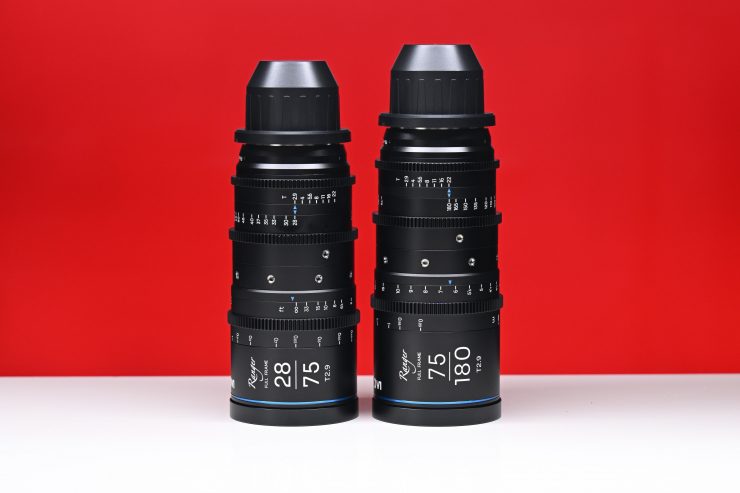
The lenses have a nice finish and they have minimal company branding on them and they are not trying to look pretentious or fancy.
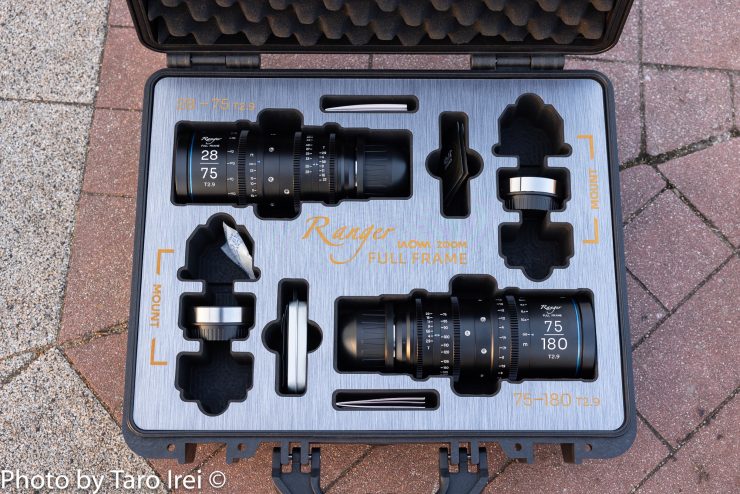
If you buy the two-lens set, they come nicely presented in a custom hard case. The case with the lenses and accessories in it weighs in at 7.5kg / 16.53 lb.
Size & Weight
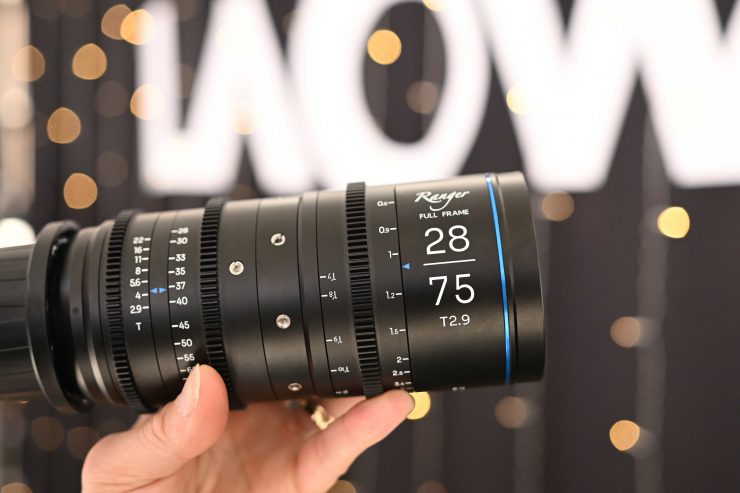
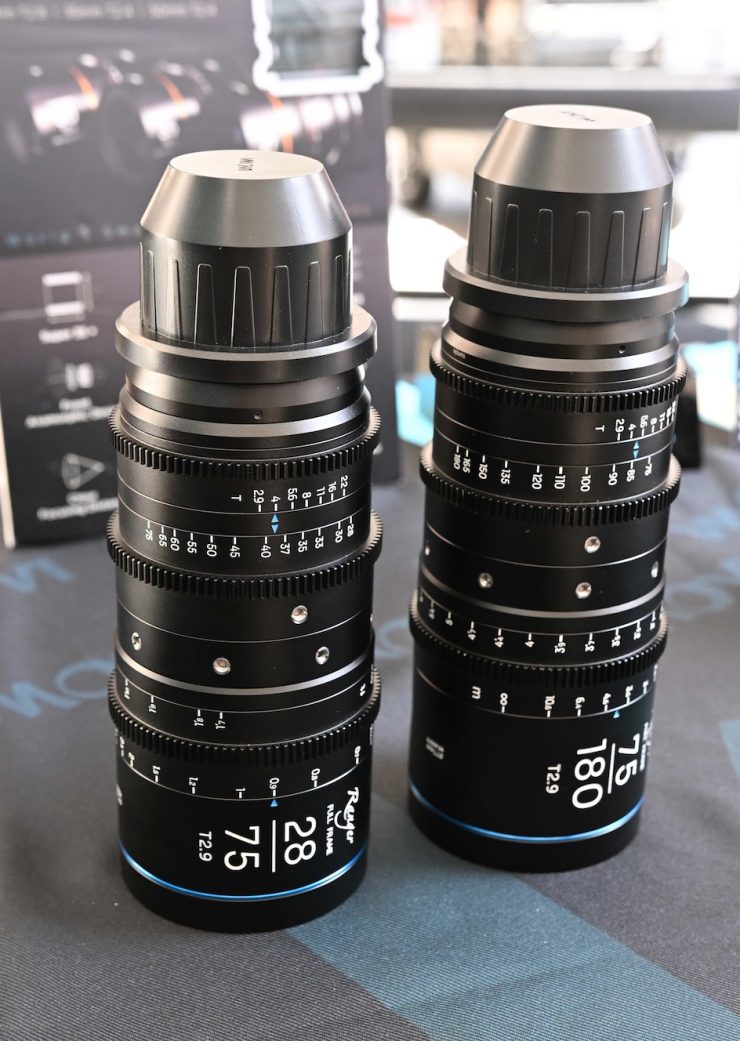
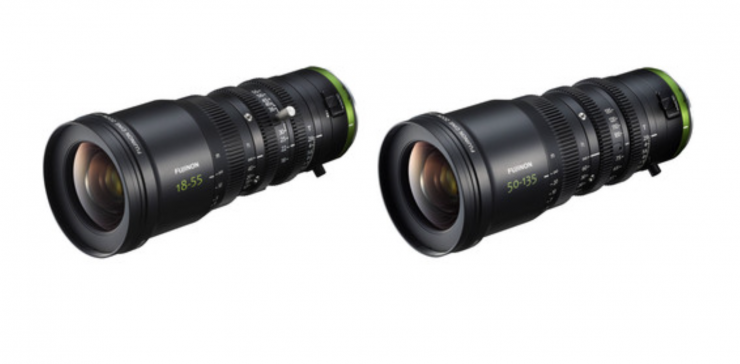
Fujinon MK series
In a lot of ways, because of the size and form factor, they remind me of the Fujinon MK series. That is impressive, given these lenses cover full frame sensors, while the Fujinon MK series only cover S35.

The Ranger series lenses weigh around 3.08 lbs / 1.4kg each.
So, let’s put that weight into perspective by comparing it against other lenses on the market. I will also throw in a couple of S35 lenses near the bottom of the list, just out of interest.
| WEIGHT | |
| Laowa 28-75 T2.9 Ranger Full Frame Cine Zoom | 3.08 lbs / 1.4kg |
| Laowa 75-180 T2.9 Ranger Full Frame Cine Zoom | 3.08 lbs / 1.4kg |
| CHIOPT COMPACT ZOOM 28-85mm T3.2 | 6 lb / 2.7 kg |
| CHIOPT COMPACT ZOOM 75-250mm T3.2 | 6.4 lb / 2.9kg |
| DZOFilm Catta 35-80mm T2.9 | 3.4 lb / 1.53kg |
| DZOFilm Catta Ace 70-135mm T2.9 | 3.5 lb / 1.59kg |
| ARRI 24-75mm T2.8 Signature Zoom | 9 lb / 4.1 kg |
| ARRI 45-135mm T2.8 Signature Zoom | 8.27 lb / 3.75kg |
| Angenieux Optimo Ultra Compact 21-56mm T2.9 FF | 5.7 lb / 2.6 kg |
| Angenieux Optimo Ultra Compact 37-102mm T2.9 FF | 5.7 lb / 2.6 kg |
| Leitz Cine Zoom 25-75mm T2.8 | 8.2 lb / 3.72kg |
| Leitz Cine Zoom 55-125mm T2.8 | 9.7 lb / 4.4 kg |
| ZEISS 28-80mm T2.9 Compact Zoom CZ.2 | 5.5 lb / 2.5kg |
| ZEISS 70-200mm T2.9 Compact Zoom CZ.2 | 6.2 lb / 2.8kg |
| Fujinon Premista 28-100mm T2.9 | 8.38 lb / 3.8 kg |
| Fujinon Premista 80-250mm T2.9-3.5 | 8.38 lb / 3.8 kg |
| Cooke 30-95mm T2.9 Varotal/i Full Frame Zoom Lens | 8.8 lb / 4kg |
| Cooke 85-215mm Varotal/i Full Frame Zoom Lens | 8.8 lb / 4kg |
| Fujinon MK 18-55mm T2.9 Lens | 2.16 lb / 0.98 kg |
| Fujinon MK50-135mm T2.9 Lens | 2.16 lb / 0.98 kg |
| DZOFilm Pictor 20-55mm T2.8 Super35 | 3.35 lb / 1.52kg |
| DZOFilm Pictor 50-125mm T2.8 Super35 | 3.75 lb / 1.7kg |
| Angenieux Optimo Style 30-76mm T2.8 | 4.19lb / 1.9kg |
As you can see they are quite a lot heavier than lenses like the Fujinon MK, but they are lighter than both the DZOFilm Catta Ace and the CHIOPT XTREME ZOOMS which are arguably their closest competition. Other options from the big boys like ARRI, Angenieux, Cooke, ZEISS, and Leitz are considerably heavier.
Above you can see how the Laowa 28-75 T2.9 Ranger Full Frame Cine Zoom compares in size to the CHIOPT COMPACT ZOOM 28-85mm T3.2. What you notice straight away is that the size of the front element on the CHIOPT is significantly bigger than that of the Laowa.
Above you can see how the Laowa 28-75 T2.9 Ranger Full Frame Cine Zoom compares in size to the Angenieux Optimo Style 30-76mm T2.8 which only covers S35-sized sensors.
Above you can see how the Laowa 75-180mm T2.9 Ranger Full Frame Cine Zoom compares in size to the TLS Morpheus 80-200mm T2.8 and CHIOPT COMPACT ZOOM 75-250mm T3.2. Again, look at the difference in size of the front element of these lenses. Yes, both the other lenses have a longer focal reach, especially the CHIOPT, so I would expect them to be bigger and heavier.
The lenses are really made for use on digital cinema cameras. Despite their relatively low weight, they are reasonably long.
In saying that, the Ranger series is small enough to be used on mirrorless hybrids. While they are reasonably long, the weight and smaller sized barrel make them easy enough to handle.
Build Quality
What I personally look for when it comes to lenses is build quality and mechanical operation consistency. With expensive cine lenses, this is what you expect and what you get. With a lot of affordable cine lenses, this is often not the case.
The Laowa Rangers have pretty consistent mechanics and build quality which was nice to see from affordably priced cine zooms. The only slight negative I came across (and I am being very picky here) is that there is slightly more resistance in the focus rotation in the middle of the range than on the close and far ends. This was the same on both lenses. I also personally found that the iris ring was a little smoother on the 28-75mm T2.9 than it was on the 75-180mm T2.9.
The markings are clearly and concisely laid out and they are easy to see. There are dual scales with feet and meters displayed on the lenses.
On the operator’s side of the lens, the focus markings are in feet, and on the non-operators side, they are in meters. All of the markings line up correctly which is what I would expect. Yes, it arguably would have been better to see two separate versions made in both feet or meters, but for affordable cine lenses that would just end up increasing the price.
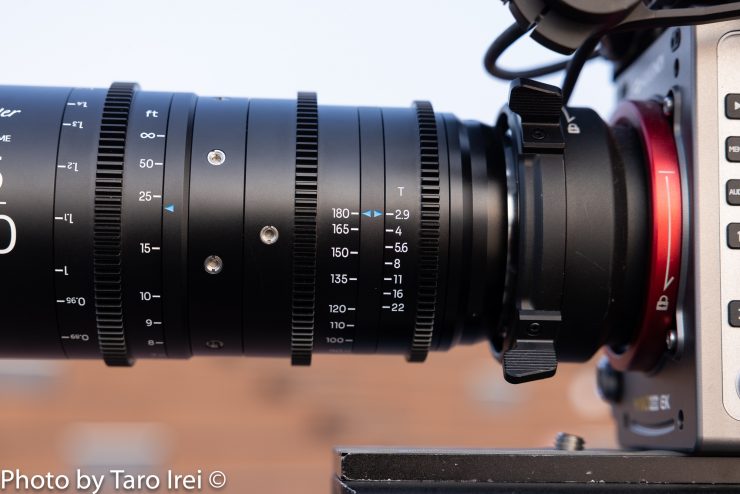
The focus, iris, and zoom pitch gears are in the exact same position on both lenses so if you are running motors or a follow focus you don’t need to move them when changing over lenses.
Optical Design
The optical design of the 28-75mm consists of 22 elements in 18 groups. The 75-180mm has 14 elements in 14 groups. Both lenses have 10 aperture blades. They both cover an image circle of 43.2mm. The focus throw is 270 degrees.
How does this compare to their closest competition? Below you can see.
| OPTICAL DESIGN | APERTURE BLADES | |
| Laowa 28-75mm T2.9 | 22 elements in 18 groups | 10 |
| DZOFilm Catta Ace 35-80mm T2.9 | 20 elements in 15 groups | 16 |
| CHIOPT XTREME ZOOM 28-85mm T3.2 | Not listed | 9 |
| Laowa 75-180 T2.9 | 14 elements in 14 groups | 10 |
| DZOFilm Catta Ace 70-135mm T2.9 | 17 elements in 11 groups | 16 |
| CHIOPT XTREME 75-250mm T3.2 | Not listed | 11 |
The lenses come natively in PL mount, with a user interchange Canon EF mount, but there are also Sony E, Canon RF, Nikon Z, and Leica L muser swappable mounts available.
Close Focus
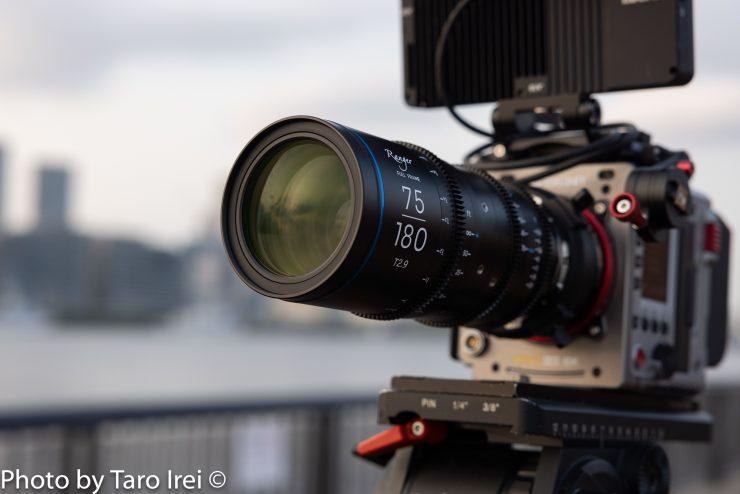
The 28-75mm and the 75-180mm can focus at pretty close distances (0.49m / 1’7” on 28-75mm and 0.89m / 2’11” on the 75-180mm) and they are claimed to have almost no focus breathing. I will test this later in the review.
So how does this close focus compare to the closest competition? Below you can see.
| MOD | |
| Laowa 28-75 T2.9 Ranger Full Frame Cine Zoom | 49cm / 1’7” |
| Laowa 75-180 T2.9 Ranger Full Frame Cine Zoom | 75cm / 2’11” |
| DZOFilm Catta Ace 35-80mm T2.9 | 75cm / 29.5″ |
| DZOFilm Catta Ace 70-135mm T2.9 | 76 cm / 29.9″ |
| CHIOPT XTREME ZOOM 28-85mm T3.2 | 40cm / 15.7″ |
| CHIOPT XTREME 75-250mm T3.2 | 1.5m / 4.9′ |
As you can see, the Laowa 28-75 T2.9 Ranger Full Frame Cine Zoom certainly has a better close-focus ability than the competing DZOFilm Catta Ace 35-80mm T2.9, but it isn’t quite as good as the CHIOPT XTREME ZOOM 28-85mm T3.2. The Laowa 75-180 T2.9 close-focus ability is almost identical to that of the DZOFilm Catta Ace 70-135mm T2.9.
Other Features
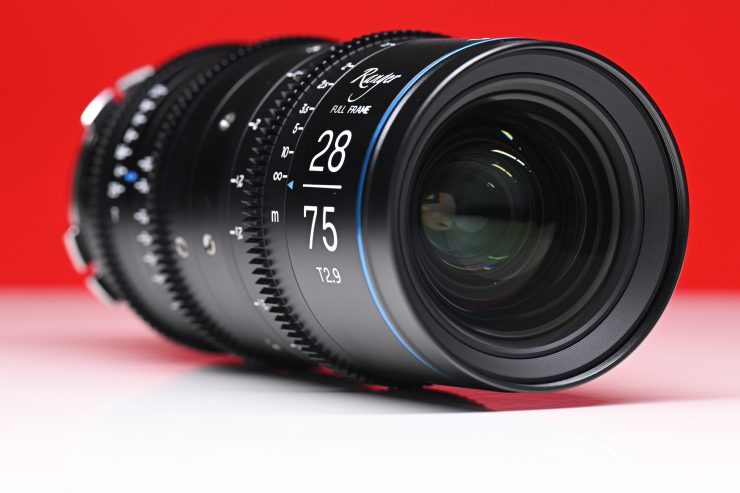
Both the 28-75mm and 75-180mm have a 77mm filter thread and 80mm outer diameter, this allows you to use screw-in filters or a matte box. They also have a back focus adjustment built into the lens.
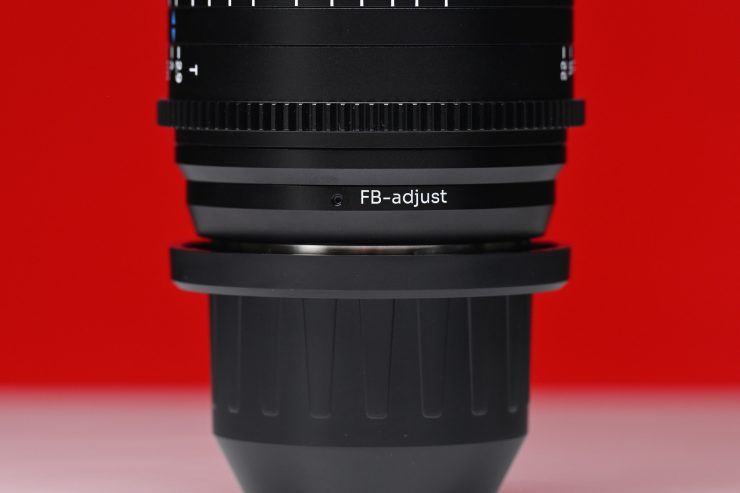
Having a back focus adjustment on the lens is very handy, especially if you are changing the mount over. It saves a ton of time and is better than the tedious process of dealing with shims.
Both lenses come with 0.8 mod gears, threads for mounting lens support and other utilities. As I previously mentioned, there are dual scales with feet and meters displayed on the lenses.
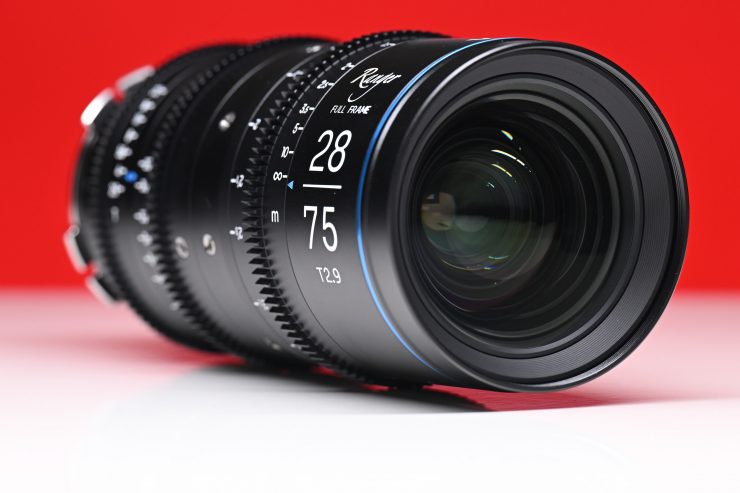
The competing CHIOPT XTREME zooms have a 114mm front, while the DZOFilm Catta’s have an 80mm front diameter and a 77cm filter thread like the Laowas.
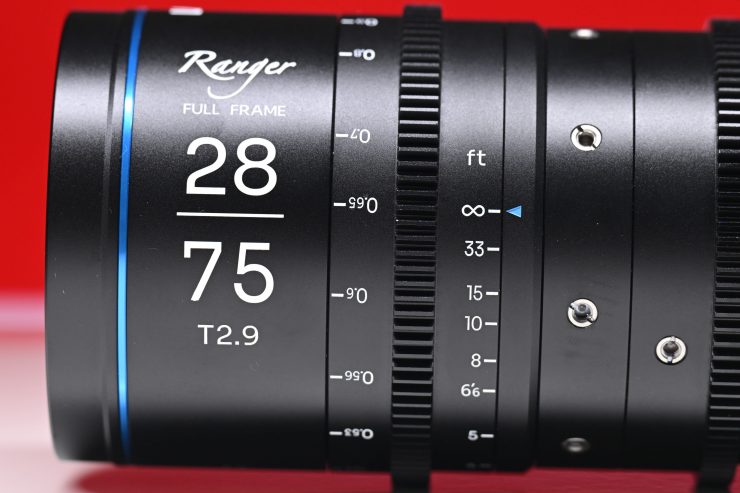
Operator’s side 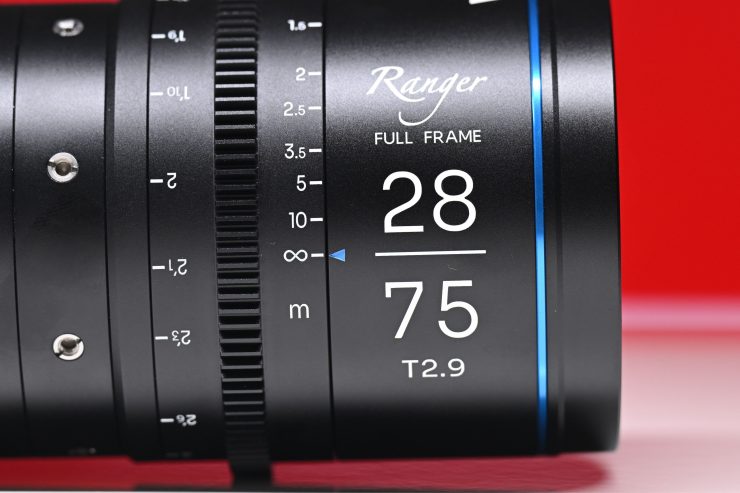
Non operator’s side
Instead of making two different versions of the lenses, Laowa has placed the metric scale on the left side of the focus ring, and the imperial scale on the right side. This is a little strange and something that DZOFilm does with its Catta zooms, and CHIOPT with its XTREME zooms.
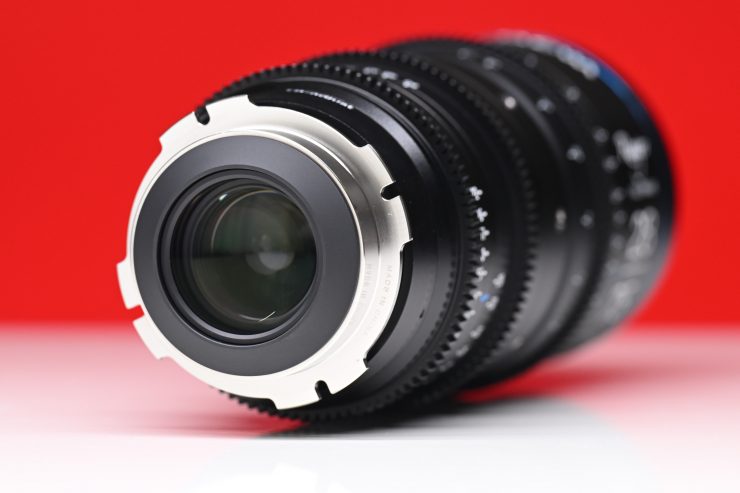
A PL native mount is standard, but they also come with Canon EF mounts. It will be interesting to see if other mounts will also be available in the future.
The Ranger full-frame zooms will also work with Laowa’s upcoming 1.33x Anamorphic Adapter. If you are using a full-frame lens, the adapter will work with any focal length over about 40mm. The Anamorphic adapter was still a prototype and they are still refining the design. Laowa hopes to be able to cover a 35mm full-frame prime without any large vignetting.
Are these lenses based on something else or are they purpose-built cine lenses?
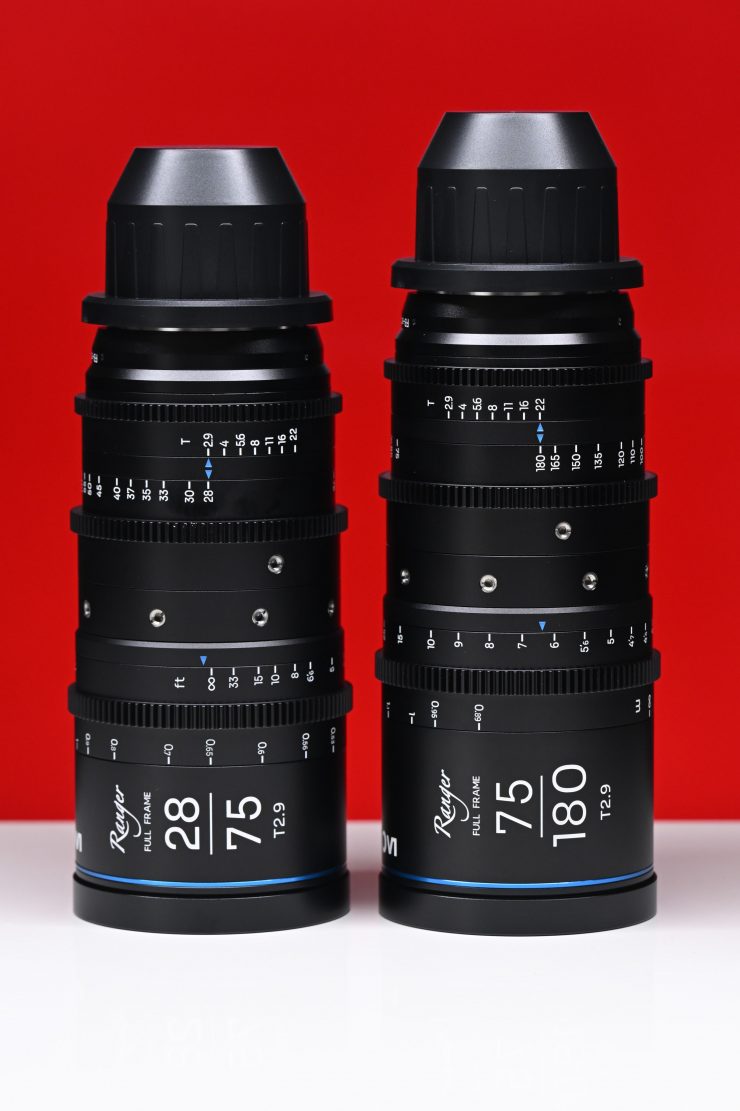
Some cine zooms are just housed stills lenses, but the Laowa Ranger series are purpose-built cine lenses. The lenses are designed and built by Laowa.
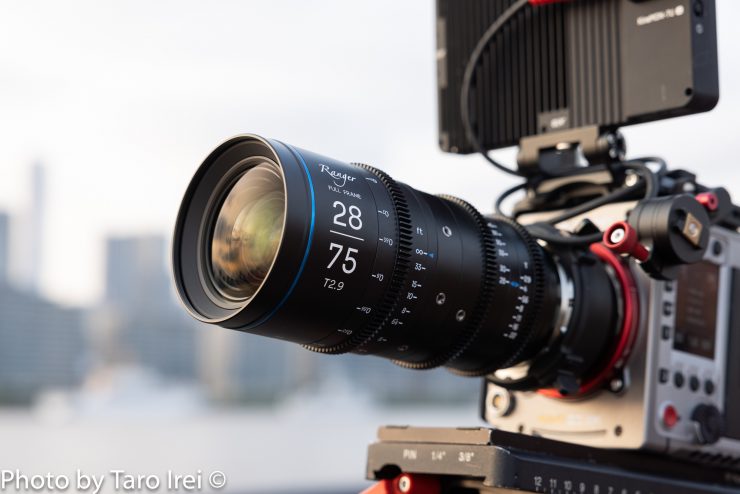
The lenses are parfocal from my testing and they maintain focus regardless of the focal length.
Lens Breathing
I tested out the 28-75mm T2.8 @28mm by doing large focus throws, and while there is a small amount of breathing, it is very well-contained for a lens at this price. I personally don’t like focus breathing as it can be very distracting. It is good to see a budget-friendly cine zoom with minimal lens breathing. Please excuse the slight movement of the frame as I was doing these focus throws manually by hand and not using a focus motor.
I also compared the focus breathing of the Ranger 28-75mm T2.9 @45mm against the CHIOPT COMPACT ZOOM 28-85mm T3.2 and the Angenieux Optimo Style 30-76mm T2.8. I did this by shooting in the S35 crop mode on the Kinefinity MAVO LF as the Angenieux only covers S35-sized sensors. The Laowa Ranger 28-75mm T2.9 held its own against the CHIOPT and the much more expensive Angenieux. Again, please excuse the slight movement as I was doing these focus throws manually by hand.
No lens technically has zero breathing, but very good cinema glass has such minimal amounts that it is virtually impossible to see. What you will normally see is some perspective shift which is normal when refocusing a lens.
Image shift is the change in location of a fixed point after a focus rack. It should be in the same spot after you rack focus.
Perspective shift is the focal length of the lens being modified by the movement of the optics. A slight change in focal length may happen if there is a floating element that moves and is not properly corrected for in the design. Certainly, the great majority of lenses have this issue. It’s also tenths of a mm so not overly noticeable.
Focus breathing is a change in image size so the size of the object will get larger as it moves out of frame. That is reproduction size.
In summary, perspective shift is the effective focal length change (angle of view change) and focus shift is the reproduction size of the object changing as focus moves. Think of it like Macro. A macro lens can be 1:1 life-size reproduction but as you focus it can change the reproduction size. That is focus shift from intentional breathing design. The angle of view is not overly affected in that case because it is flat field focus. On spherical lenses, the angle of view does change slightly as you focus rack thus making for perspective/angle of view shift.
I also tested the focus breathing of the 75-180mm T2.9 @75mm and 180mm. With longer zooms, you usually see some amount of focus breathing, and yes, the Laowa does breathe at both 75mm and 180mm, but it is well-controlled for a lens with this focal range.
I also compared the focus breathing of the 75-180mm @75mm against the CHIOPT COMPACT ZOOM 75-250mm T3.2 and the TLS Morpheus 80-200mm T2.8 (@80mm). The focus breathing of the Laowa Ranger is well controlled for a lens with this focal range and it had lens breathing than both the CHIOPT and the TLS.
Fall off, Image Coverage & Vignetting
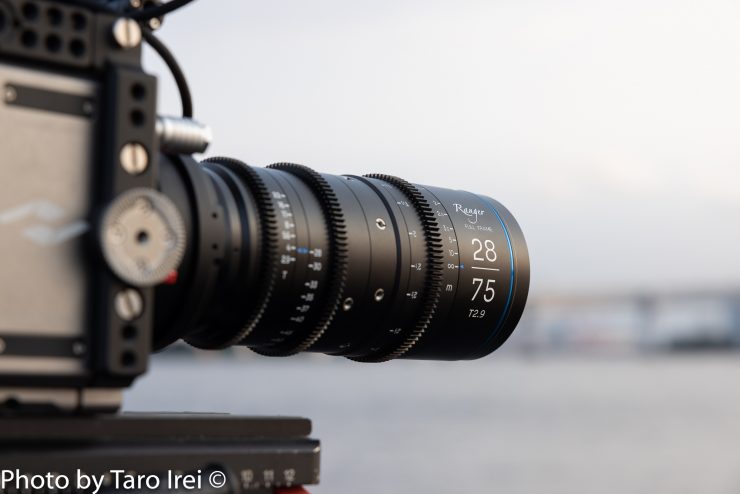
As the lens covers a 43.2mm image circle, when you use it on a full-frame-sized sensor you get very good illumination across the entire image.
I didn’t see any vignetting when shooting 6K 17:9 full-frame on the Kinefinity MAVO LF with either lens.
Sharpness
28-75mm T2.8
The growing trend that is common with a lot of the affordable cine zooms and primes these days is to come up with something that is a little more vintage, and that sometimes comes at the expense of sharpness. I was curious to see if the Ranger series followed that trend. Above you can see how the 28-75mm T2.9 performs when used at various T-stops at 75mm. The reason I shoot the small robot is that it has very finite details and textures on it. I also have shot countless sharpness tests with lenses using this same robot over the years so it allows me to have a baseline and comparison.
The 28-75mm is not that sharp when used at T2.9 @75mm, but it sharpens up pretty quickly at T4. By T5.6 it is nice and sharp. The lens doesn’t have a lot of micro contrast and at DCI 6K it doesn’t show a lot of fine detail. Now, there is nothing wrong with this as a lot of people these days are not looking for an ultra-sharp lens.
If you punch in 300% and pixel peep you can see how much sharper the lens is at T4 as opposed to T2.9.
When it comes to corner and edge sharpness @75mm when used at T2.9 it is pretty soft. At T5.6 you can see just how much corner and edge sharpness increases.
Above you can see how the lens performs when used at various T-stops @28mm. From my testing, the lens is certainly sharper at 28mm than it is at 75mm when used wide open at T2.9. The sharpness difference between T2.9 and T4 isn’t that different.
If we look at corner and edge sharpness, the 28-75mm @28mm performs a lot better at T2.9 than when it is used at 75mm.
Above you can see how the lens performs when used at various T stops at 40mm. At 40mm it is as sharp as it is at 28mm. Wide-open at T2.9 it performs well, and there is only a small improvement when using it at T4.
I also compared the sharpness of the Ranger 28-75mm T2.9 @45mm against the CHIOPT COMPACT ZOOM 28-85mm T3.2 and the Angenieux Optimo Style 30-76mm T2.8. I did this by shooting in the S35 crop mode on the Kinefinity MAVO LF as the Angenieux only covers S35-sized sensors.
The Laowa Ranger 28-75mm T2.9 @45mm was sharper than the CHIOPT COMPACT ZOOM 28-85mm T3.2, and not far behind the Angenieux Optimo Style 30-76mm T2.8 which was impressive.
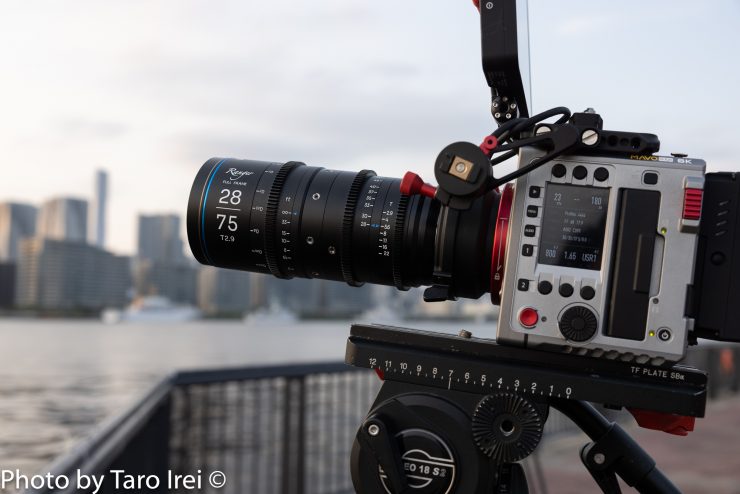
From my tests, I found that the lens is certainly a lot sharper at wide and mid-focal lengths. At longer focal lengths the lens is certainly softer, especially when used wide open. This is exactly the same as the competing CHIOPT COMPACT ZOOM 28-85mm T3.2, although that was also softer at mid-focal lengths as well. With the Angenieux Optimo Style 30-76mm T2.8, the sharpness is consistent across the focal range.
75-180mm T2.8
Above you can see how the lens performs when used at various T stops at 180mm. The lens is pretty sharp when used @75mm, even wide open, but it does improve when stopping down to T4 or T5.6.
If we look at corner and edge sharpness, @75mm the lens does a reasonably good job when used wide open at T2.9. At T5.6 it does have good edge sharpness.
Above you can see how the lens performs when used at various T stops at 125mm. At 125mm it is not quite as sharp as it is at 75mm. Wide-open at T2.9 it still performs reasonably well, but it does improve when stopping down to T4 or T5.6.
Above you can see how the lens performs when used at various T stops at 180mm. At 180mm it is not as sharp as it is at 75mm. Wide-open at T2.9 it is a little soft. I personally think it was still usable at T2.9, but the sharpness does improve quite a lot when stopping it down to T4.
The corner and edge sharpness is not great @180mm when used wide open at T2.9. Stopping down to T5.6 sees a big improvement.
Above is a comparison between the Laowa Ranger 75-180 T2.9, CHIOPT COMPACT ZOOM 75-250mm T3.2, and TLS Morpheus 80-200mm T2.8 @80mm when used wide open. The CHIOPT was the sharpest of the three lenses, but that didn’t come as a huge surprise as its max. aperture is T3.2. The Laowa Ranger was fairly comparable to the TLS Morpheus 80-200mm T2.8.
Above is a comparison between the Laowa Ranger 75-180 T2.9, CHIOPT COMPACT ZOOM 75-250mm T3.2, and TLS Morpheus 80-200mm T2.8 @180mm when used wide open. The CHIOPT was by far the sharpest of the three lenses, but that didn’t come as a huge surprise as its max. aperture is T3.2. The Laowa Ranger was fairly comparable to the TLS Morpheus 80-200mm T2.8. If you are in the market for a full-frame zoom with a long focal range, the CHIOPT COMPACT ZOOM 75-250mm T3.2 is very hard to beat for the price.
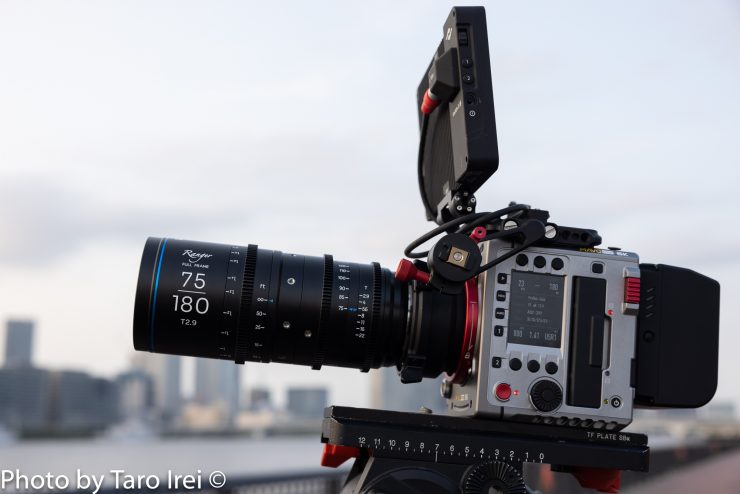
From my tests, I found that the lens is certainly a lot sharper at its widest and mid-range focal lengths. At longer focal lengths the lens is certainly softer, especially when used wide open.
Lens Flare
28-75mm T2.8
The lens is capable of producing some interesting flares when used at 28mm. Lens flare is very much a personal thing and whether you like the flares this lens produces only you will know.
75-180mm T2.8
Above you can see what the lens flare looks like on the 75-180mm when it is used at 75mm. I personally didn’t like the flare from the 75-180mm, but that is just my opinion. There does seem to be a lot of refracting light within the lens that causes a circular rainbow flare.
Chromatic Aberration
28-75mm T2.9
The lens doesn’t have a lot of real-world visible chromatic aberration. If you zoom into the image by 300% when used wide open at T2.9 you can see a small amount of purple color fringing on reflective surfaces and over-exposed areas. The small amount of chromatic aberration is impressive for a lens at this price.
75-180mm T2.9
Just like the 28-75mm T2.9. the 75-180mm T2.9 doesn’t have a lot of real-world visible chromatic aberration. If you zoom into the image by 300% when used wide open at T2.9 you can see a small amount of color fringing on reflective surfaces and over-exposed areas. The chromatic aberration is probably a little bit more visible on the 75-180mm than it is on the 28-75mm.
Bokeh
Nice bokeh is something everybody craves. The bokeh produced is reasonably round and there are no signs of onion rings.
Distortion
Barrel distortion is well controlled, even at 28mm.
Color Tone
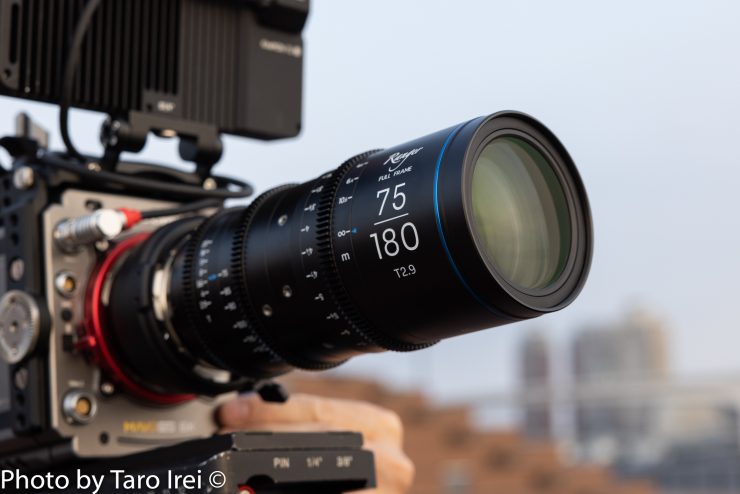
The Laowa Ranger full-frame zooms are fairly neutral when it comes to the color tone, however, I did find that they lean slightly warm. The lenses aren’t too clinical, especially when used wide open. What look you actually prefer from a lens is entirely going to come down to personal choice. I certainly wouldn’t consider that they are following that trend of having a ‘vintage look’ that so many affordable lens companies use to describe their lenses. They are modern optics, but they are not too sharp or too overly clinical.
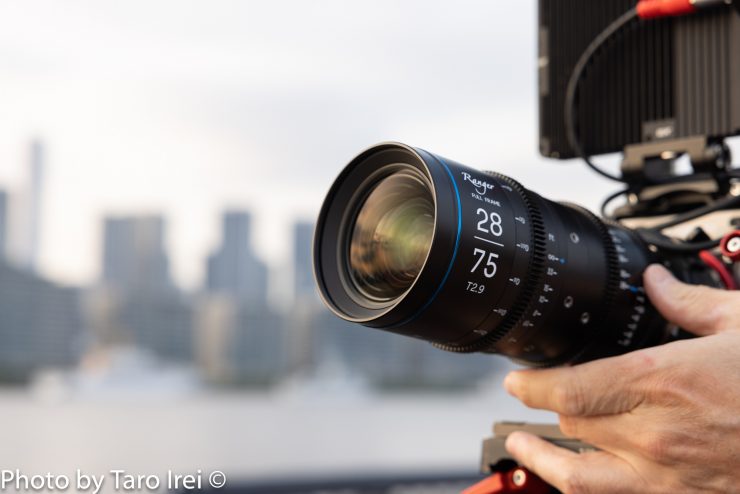
The color tone of a lens is really something you should look at closely if you are going to be using both prime and zoom lenses from different manufacturers. Certain prime and zoom lenses work better together than others. What will work for you will also depend on what camera you are using.
Real World Thoughts
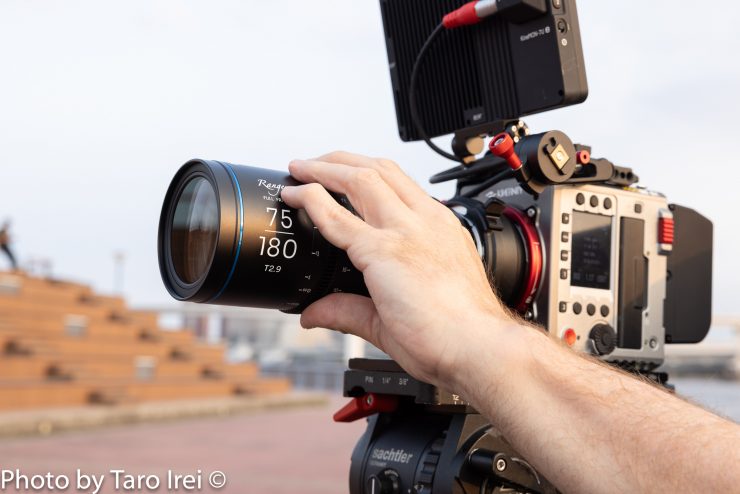
The LAOWA Ranger series are well-made full-frame cine zoom that would be right at home on cameras such as the Sony FX6, FX9, VENICE, RED V-Raptor, ARRI ALEXA Mini LF, Canon C500 Mark II, Kinefinity MAVO LF, EDGE, etc. You could also certainly use them on S35-sized sensor cameras as well.
The weight and size do mean that you could use them on smaller-sized digital cinema cameras and even mirrorless hybrids.
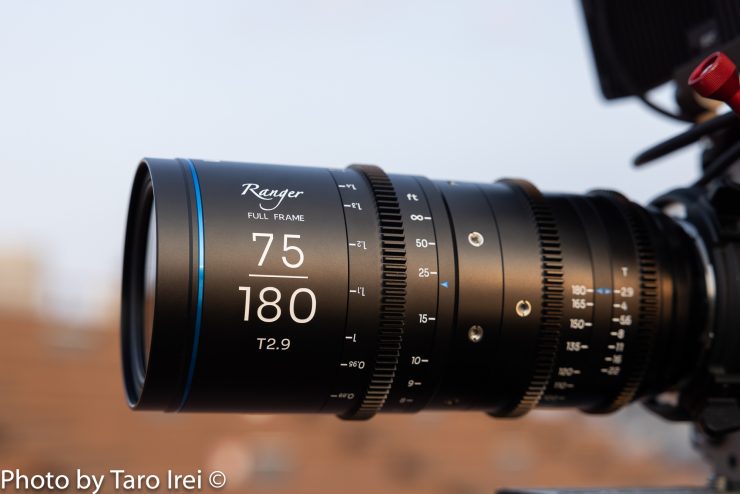
I went and took some shots with the lenses to see how they performed in the real world. Technical tests are all good and well but you really need to see how they perform in real-world environments both in terms of ease of use and lens performance.
Above you can see some footage captured with the lenses. I was interested to see how they performed at various focal lengths and what their usability was like when used wide open.
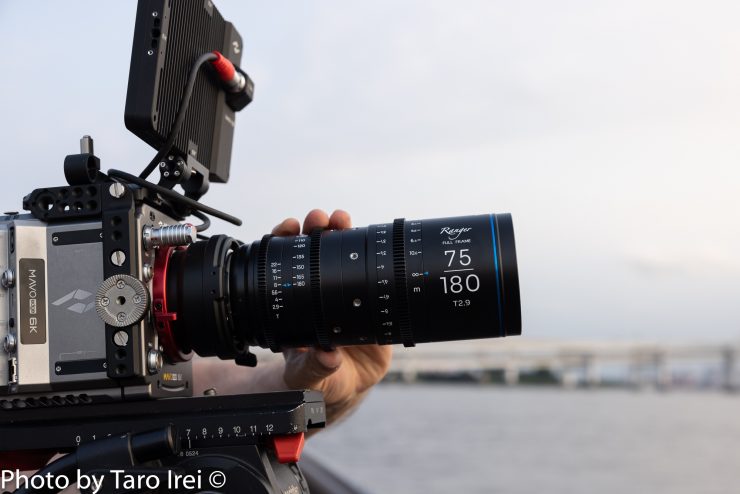
They are nice to operate and use, and the mechanics are good for lenses at this price. The small barrel size and compact nature make them easy to operate if you are working by yourself or in small crews.
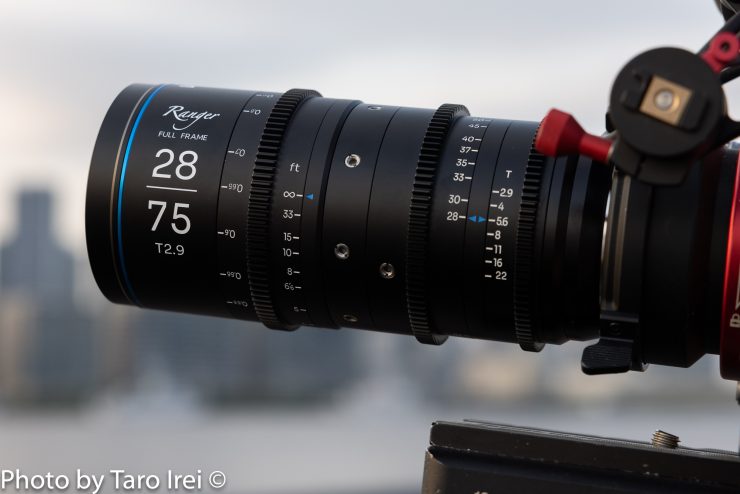
The overall optical performance of these lenses is good. I thought the 75-180mm T2.9 might be a little soft at the long end when used wide open from my previous technical tests, but it looked pretty good in real-world conditions.
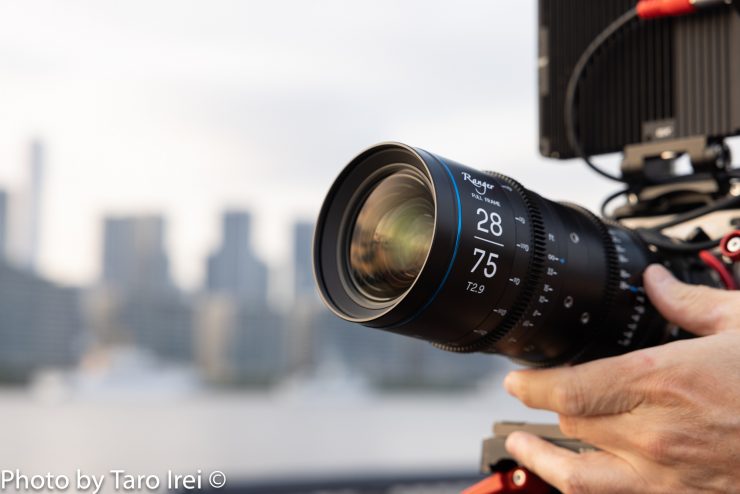
The biggest problem Laowa arguably faces is that they are not as well known as other brands in the cine lens space. Some people have a preconceived bias that affordable cine lenses from China won’t be optically good. This is certainly not the case at all, and just as you should never judge a book by its cover, you should always judge a product on its merits and not based on a brand name.
Competition
As I already mentioned in my weight comparison earlier in the article, there is a myriad of full-frame cine zooms with similar focal ranges on the market, however, the direct competition, at least in my opinion, comes from the DZOFilm Catta full-frame zooms and the CHIOPT XTREME COMPACT ZOOMS.
Price & Availability
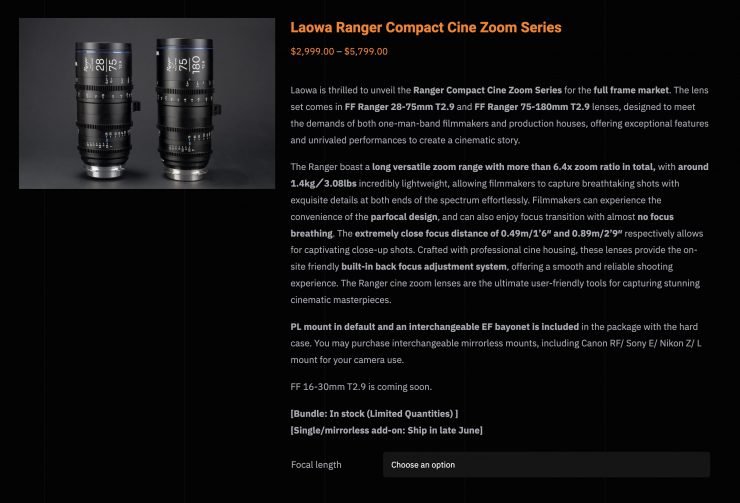
The Laowa Ranger full-frame zooms retail for $2,999 USD each, or you can get the 28-75mm T2.9 & 75-180mm T2.9 in a kit for $5,799 USD.
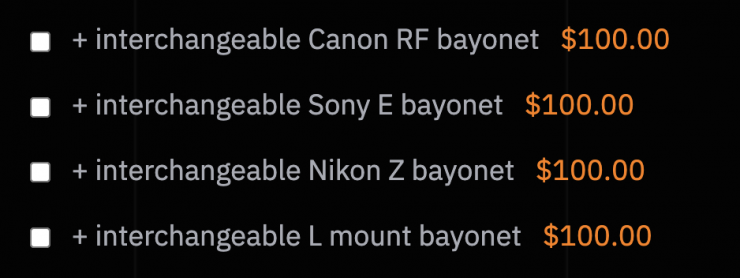
You can also buy additional Canon RF, Sony E, Nikon Z, and Leica L user changeable mounts for $100 USD each.
Above you can see what full-frame cine zooms with similar focal ranges cost. The Laowa Rangers have certainly been priced to compete directly with the DZOFilm Catta and CHIOPY XTREME zooms.
What do you get?
If you buy the two-lens kit for $5,799 USD comes in a nice custom hard case and inside you get the lenses, shims, tools, lens supports, and two EF mounts.
Conclusion
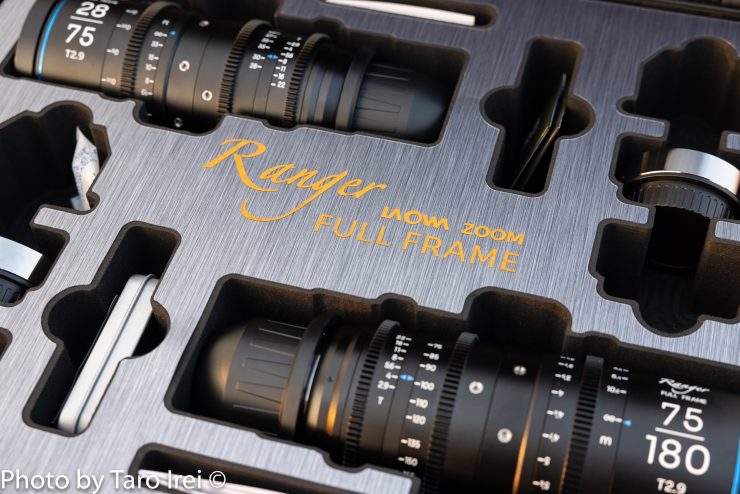
The Laowa Ranger full-frame zooms offer great bang for your buck. They are good options if you are looking for solidly made full-frame cine zooms with decent focal ranges that don’t weigh much. Yes, the lenses aren’t optically perfect, but that is always going to be the case with the majority of budget-friendly cine zooms. In saying that, they have decent sharpness, low chromatic aberration, and the focus breathing is well controlled. Most importantly they are easy to use and operate.
The 75-180mm could be a little sharper, especially when used wide open at longer focal lengths and the flare is a little funky. However, from my real-world testing i did find that the 75-180mm was still sharp enough to be used wide open at longer focal lengths.
On the positive side, the mechanics of the lenses are very good considering their cost.
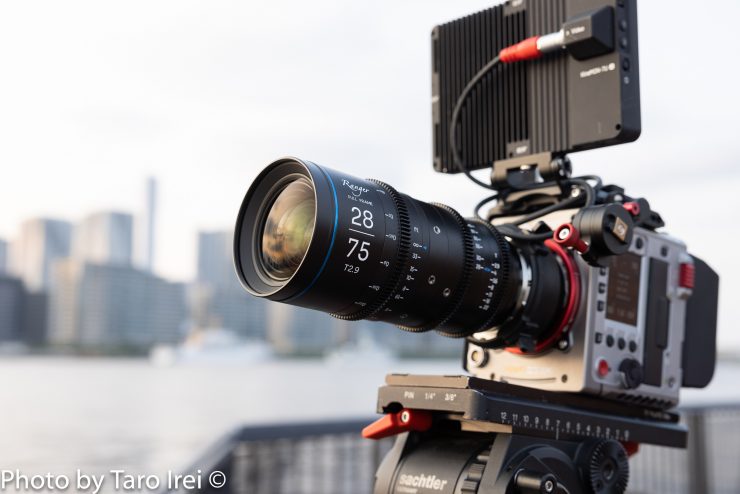
The lenses are slightly lighter than the DZOFilm Catta zooms which allows them to be used on a wide array of different cameras. Having a back focus adjustment is a big deal, especially on any lens where you have user-swappable mounts.
Sure, you could just choose to use an AF lens if you wanted to, and for some people that will make more sense. The biggest issue with AF lenses is that you get locked into using a particular mount, there is normally no manual iris adjustment, and manually focusing can be a challenge. Quality stills lenses can be very sharp and optically very good. At least from my perspective, the Ranger lenses are not being targeted at the same user who wants to use AF stills lenses. They are being aimed at those users who prefer to use cine glass where items like a longer focus throw, a manual iris, the ability to use focus motors, and user-swappable mounts are important. Not every tool is suitable for everyone and that is why we have choices.
The biggest benefit of lenses with a PL mount is that you can use them on almost any camera, whereas if you choose AF stills lenses you are predominantly locked into using those lenses on a select number of cameras.
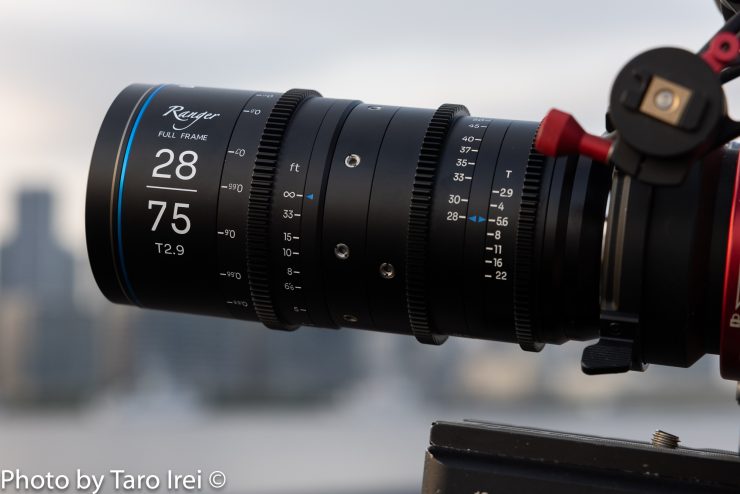
Look, there are no shortcuts with optics, and if you want to make full-frame cine zoom lenses that have this focal range with this weight and size you will need to cut some corners. In saying that, I am impressed with what Laowa has managed to accomplish given the compromises they inevitably had to make.
There is a certain irony when you hear people complaining about the lens options we now have available. I would have killed for a set of zooms like this 10 years ago. I still find the fact that you can buy two full-frame zooms with a constant T2.9 stop and with these focal rangers for under $5800 USD mind-boggling. No, I don’t for one second expect that they are going to be able to go head-to-head with lenses that cost 20x more, but you know what, they do a very good job considering the massive price difference.
If you are in the market for a set of full-frame cine zooms that cover a decent range and that are lightweight, reasonably compact, and won’t cost you the price of several cars, then the Laowa Rangers are hard to beat. I think what sets them apart from the competing DZOFilm Catta’s is that they offer a better focal range if you are just looking at getting two lenses.
With the addition of the upcoming 16-30 T2.9, you can get a comprehensive set of zooms for under $9K that will cover you for a lot of shooting scenarios.
The biggest problem with full-frame zooms is if you need length. 180mm still isn’t that long on a full-frame sensor. The trouble is, making a full frame cine zoom with a focal reach over 200mm is not easy and the lens will be large and heavy.
These lenses, despite the fact that they were designed for use on full-frame cameras, would also be right at home on S35-sized sensor cameras as well. A three-lens kit with a focal range of 16-180mm all at T2.9 makes a lot of sense for shooting S35.
It is good to see more competition in the affordable full-frame cine zoom space. If you are an owner/operator, lenses such as the Laowa Rangers make a lot of sense. They won’t empty your wallet and they provide decent results. No, they aren’t going to offer the same optical quality as more expensive offerings, but they still get the job done for far less money and that is their biggest appeal.
Specifications
